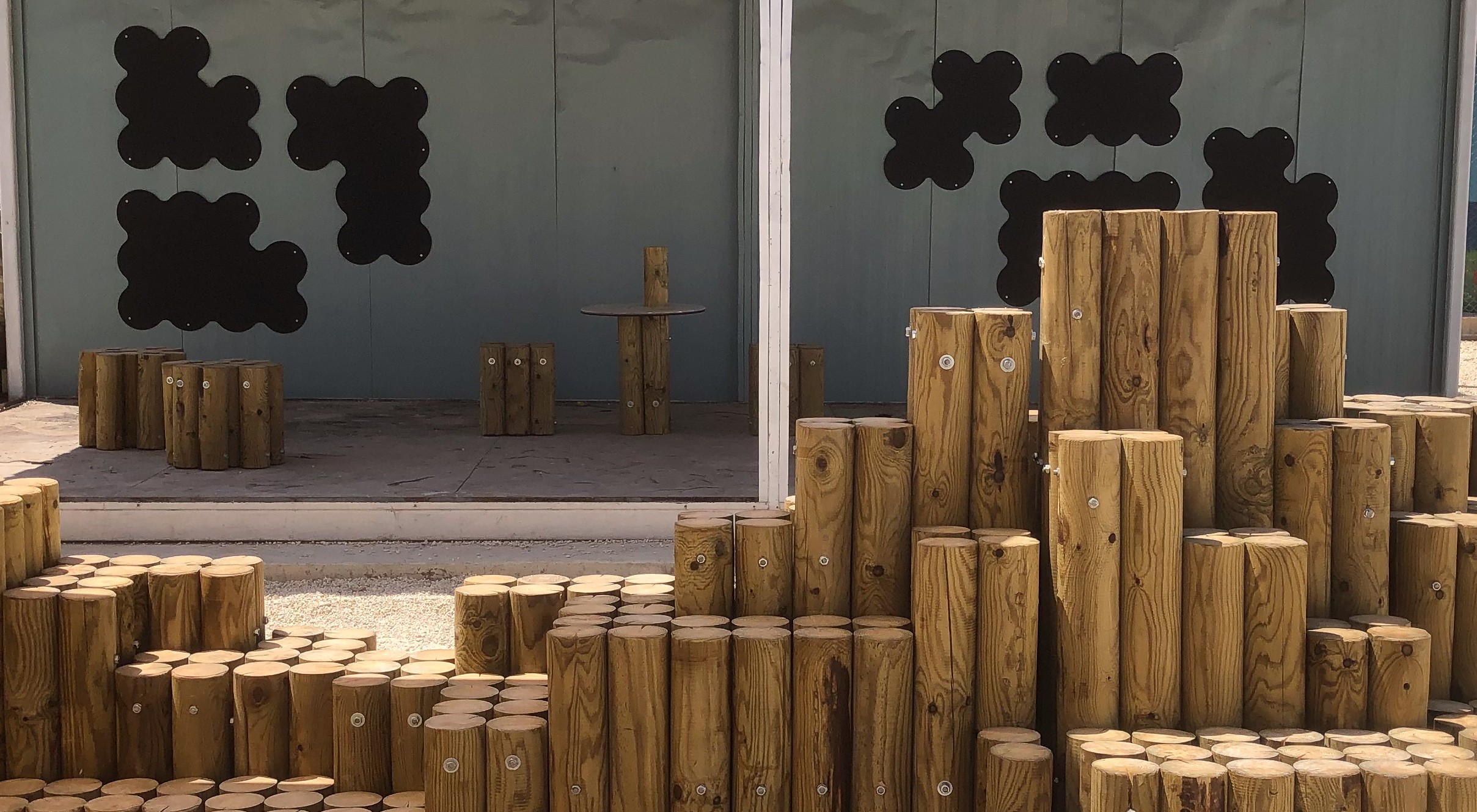
sustainable wood fabrication for a playground in a refugee camp
topo campscape
type: social project
role: resident designer
collaboration: Thinker Maker Space and resident artists
location: Nicosia, Cyprus
year: 2024
The topo campscape was carried out in collaboration with Thinker Maker Space (CYENS) and my colleagues Mateus, Sasha, and Dali. My role involved developing the conceptual design using parametric tools and providing the technical drawings for budgeting and fabrication. The project aimed to address the needs of young boys in the camp by creating a space where they could relax, be active, and connect with each other in a safe, welcoming environment.
Through an initial workshop, we identified the need for a space for play and self-expression, shaping the core of the design. As a result, we developed a modular climbing bench installation that encourages interaction and exploration at different levels. Additionally, we restored two fire-damaged containers, transforming them into creative spaces with new furniture and chalkboard-painted panels, offering the boys a place for artistic expression and relaxation.
phase 1 – discover


workshop at Pournara:
On Friday, May 31st, we ran our first workshop with a group of teenage boys at the Pournara First Reception Centre. It was a chance to connect, share ideas, and hear from them about what they needed. They talked about how important it was to have spaces to move, play, cool off, and be creative—whether through painting, drawing, or just having a place to relax.
With the help of social workers and translators, we found ways to communicate across English, Somali, and Arabic. The boys shared their experiences and imagined ways to make the centre feel better, using small models we had brought from Thinker Maker Space. We ended the day by filling the walls with drawings, a moment of shared creativity that brought us all a little closer.



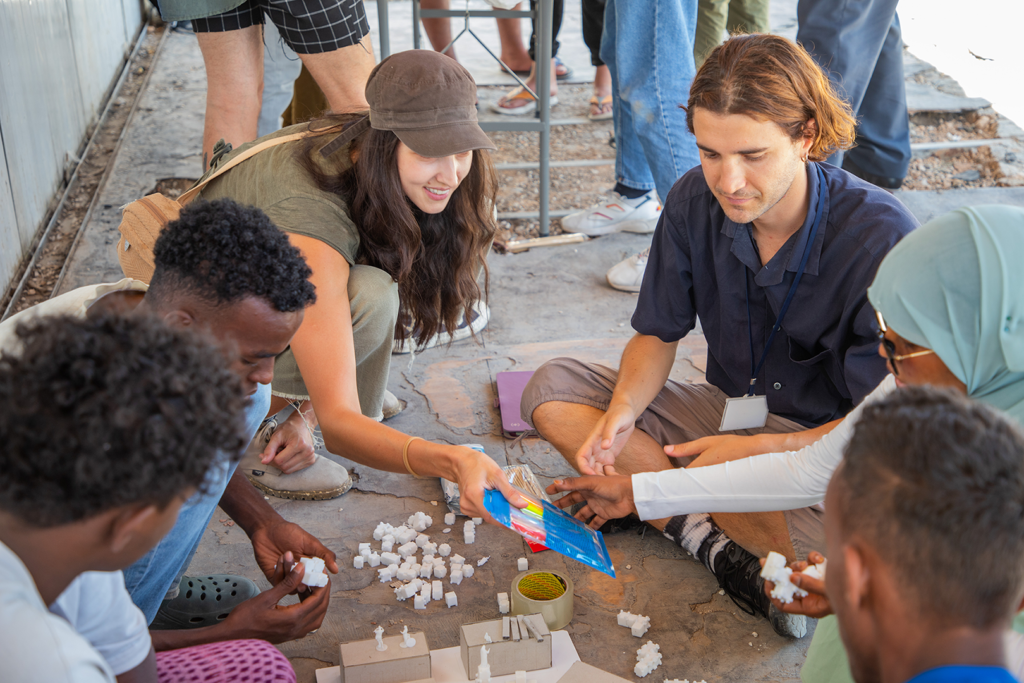
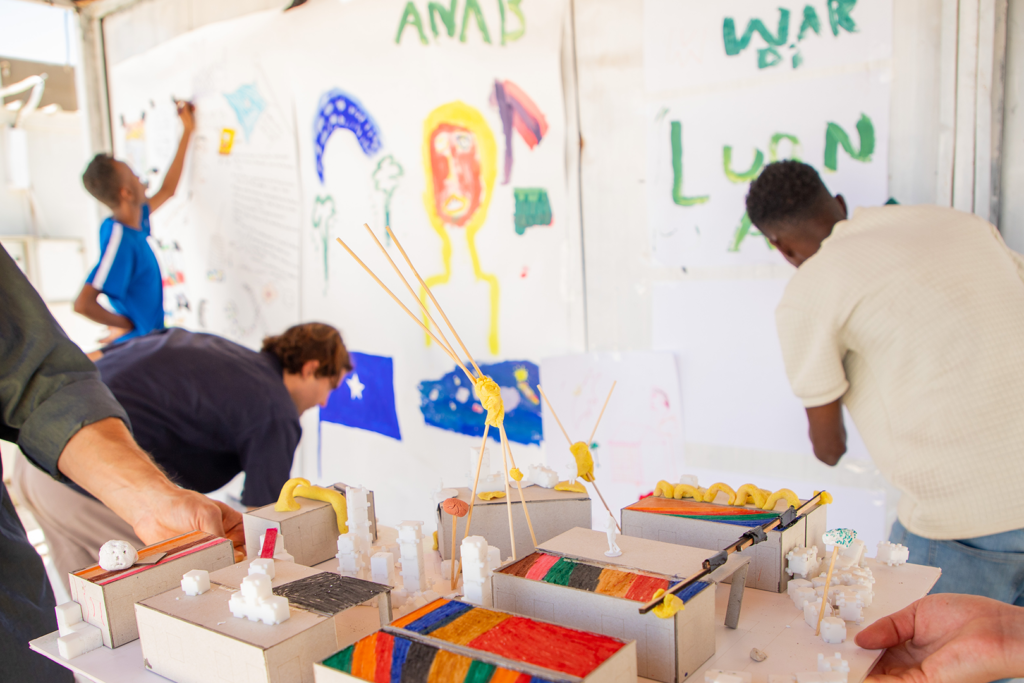

phase 2 – define
climbing wall (op.1):
For the first option, we considered that the municipality would donate various materials. This led us to create a pixelated design on the floor and attempt to extend this concept to the climbing wall. We used Grasshopper to optimize the quantity of each colour available to design the floor. Additionally, we planned to build a wall with clay bricks that would be donated.
However, since the donation didn’t materialize, we had to rethink our alternatives.
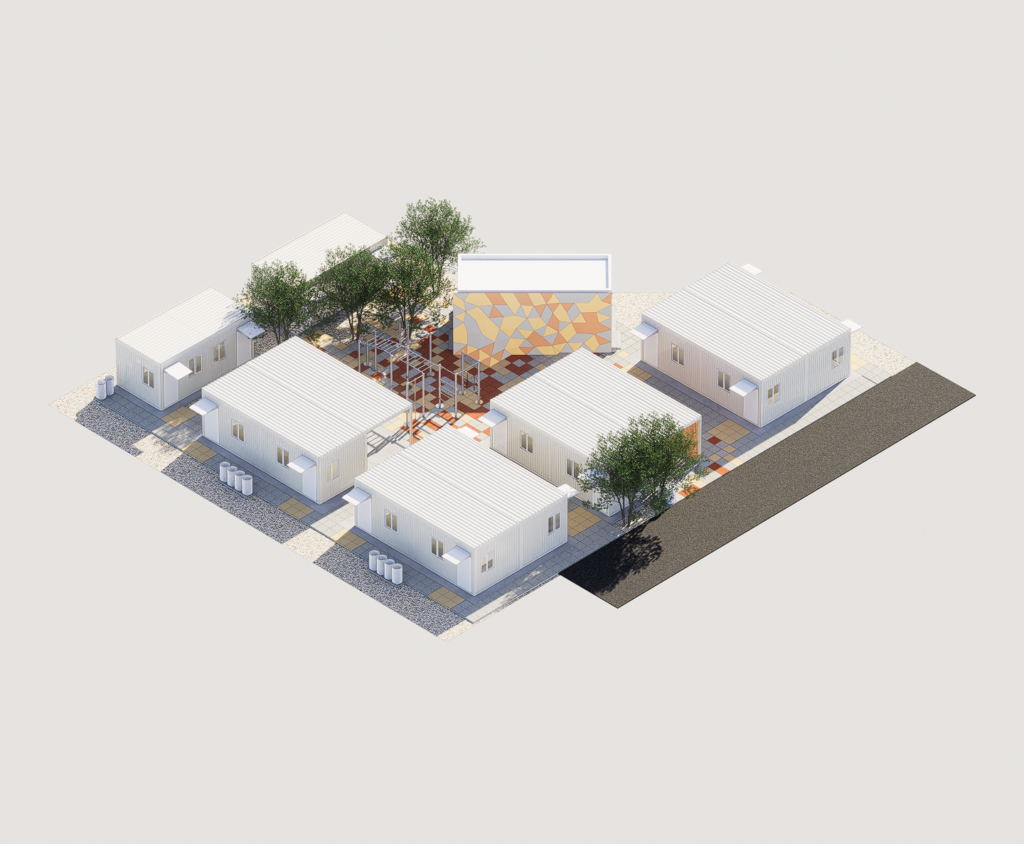
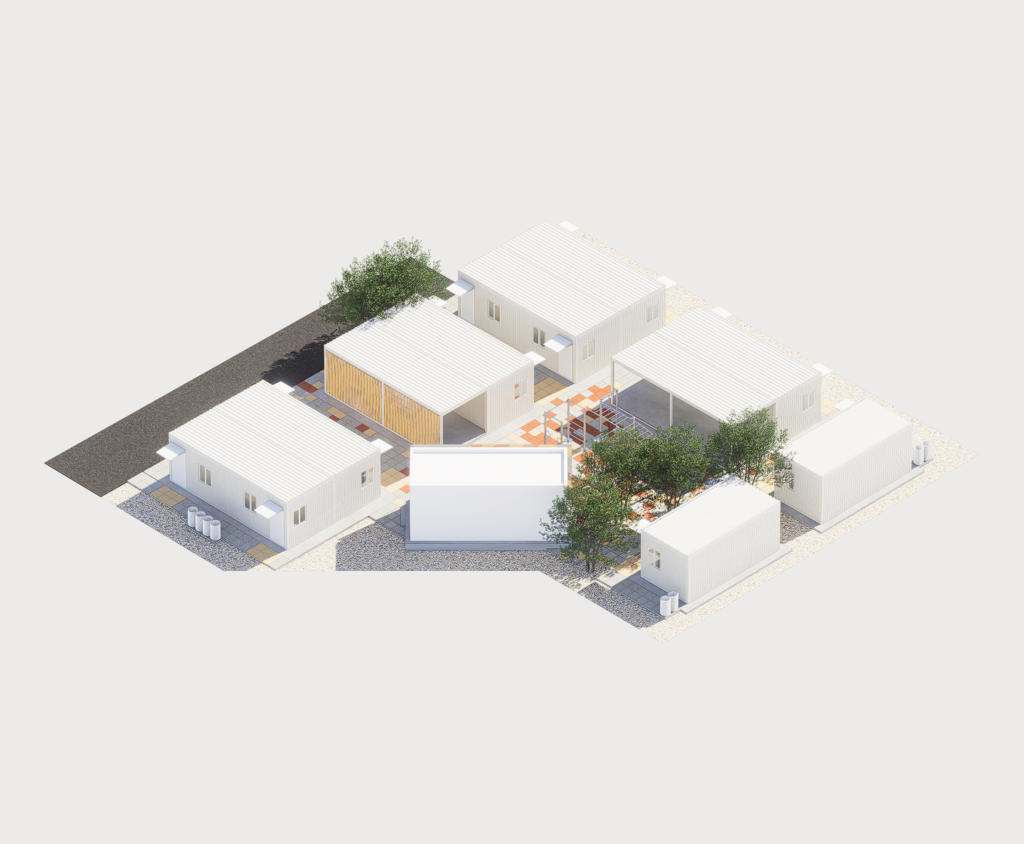
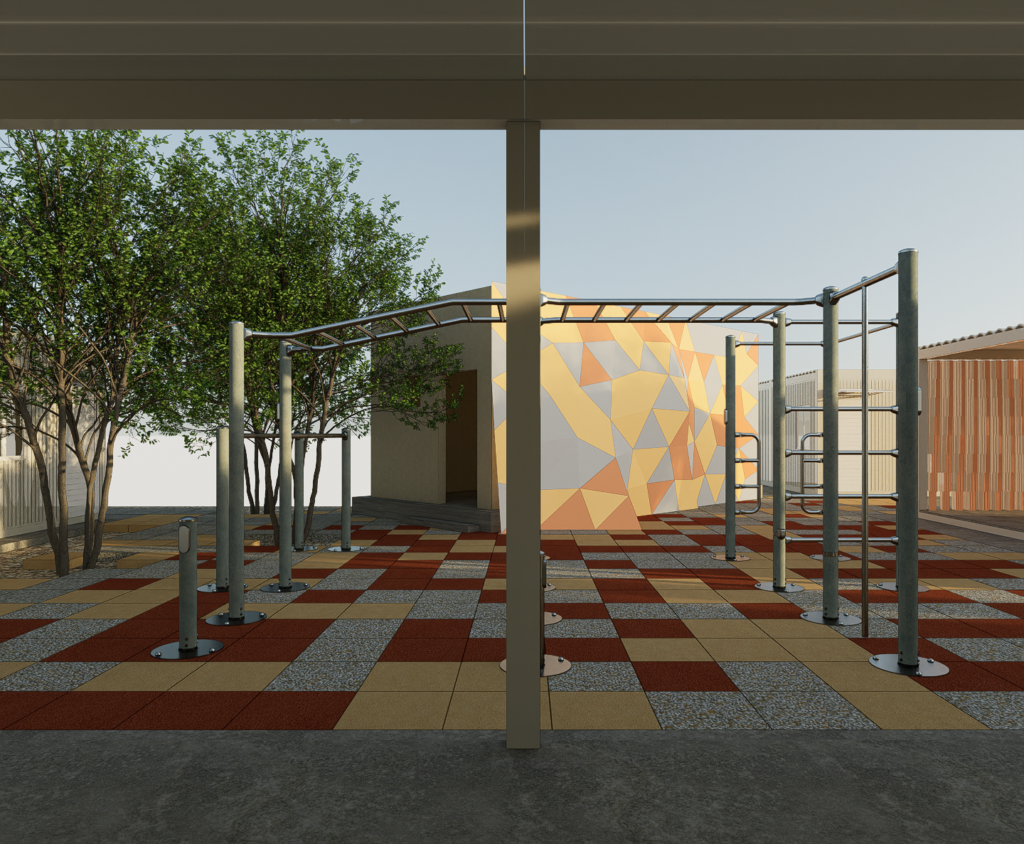
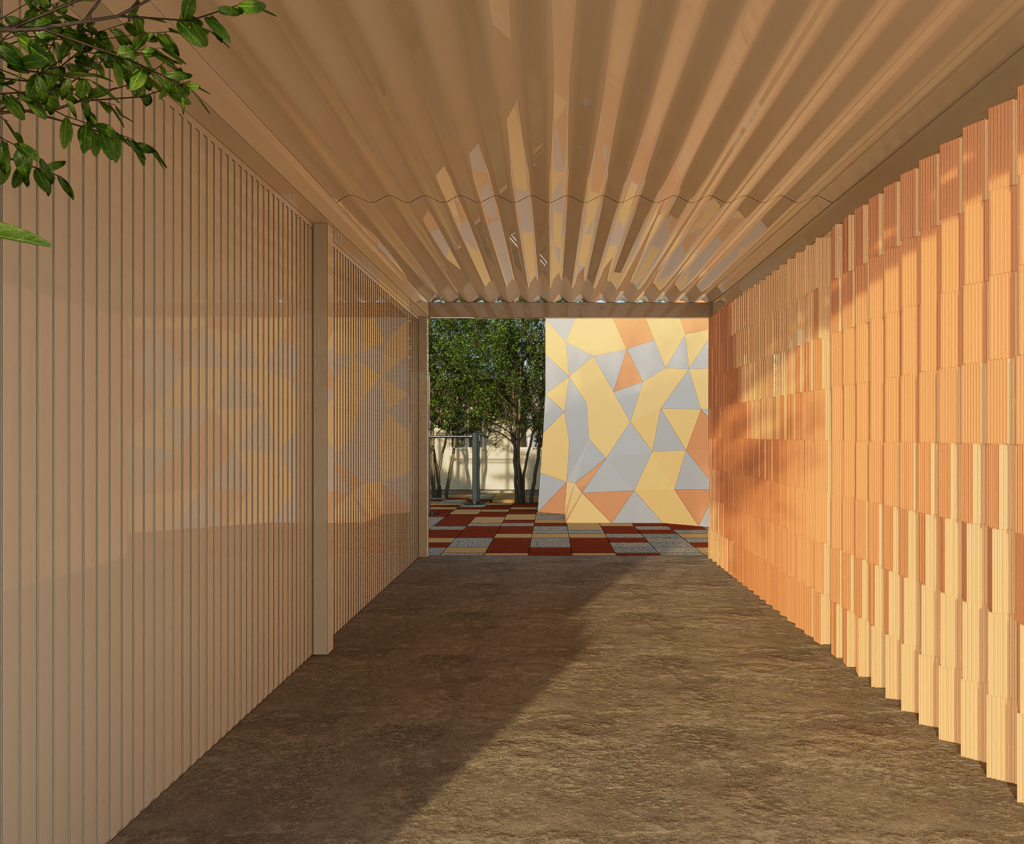
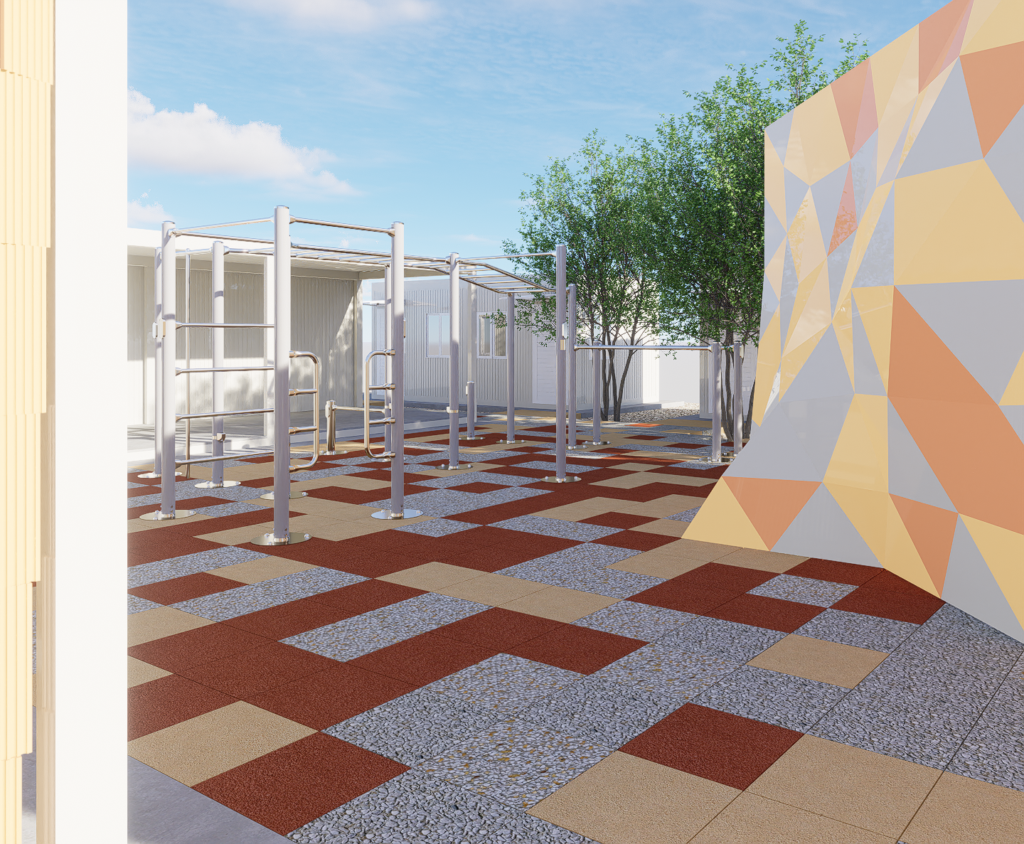
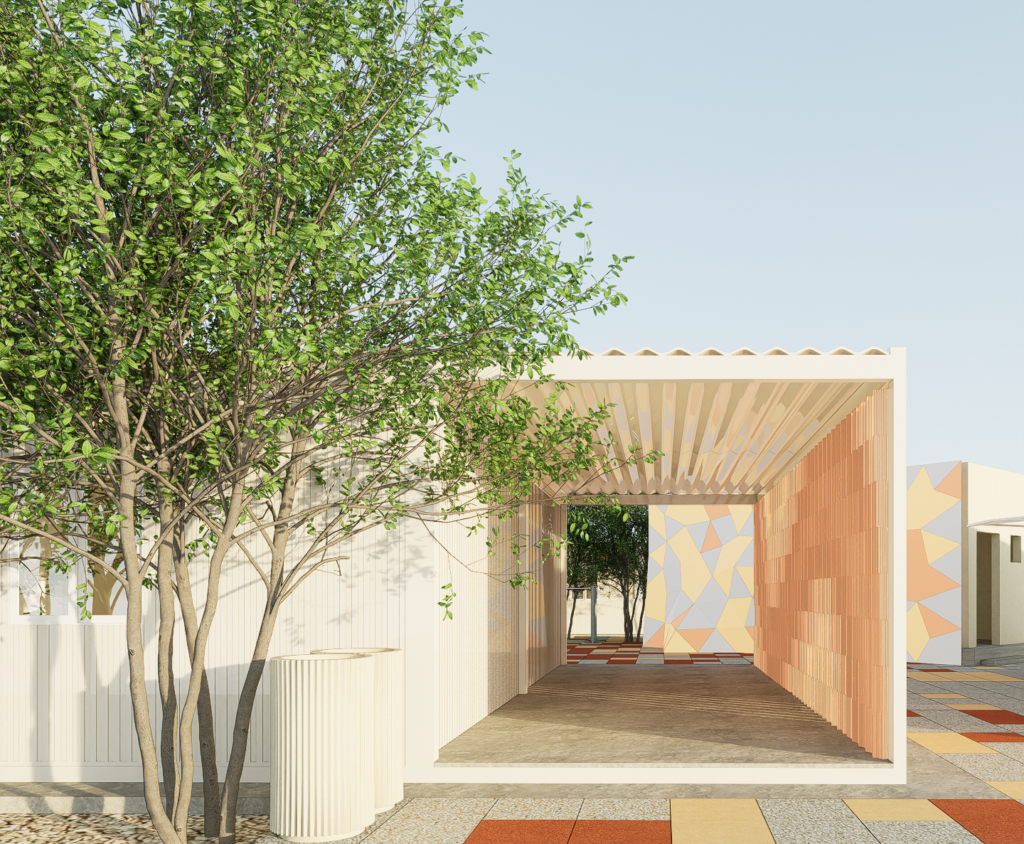
parametric tunnel (op.2):
In the second Option, we found pine wood at an affordable price and decided to proceed with this material. We developed a parametric tunnel that runs through the entire space, with the playground taking place inside it.
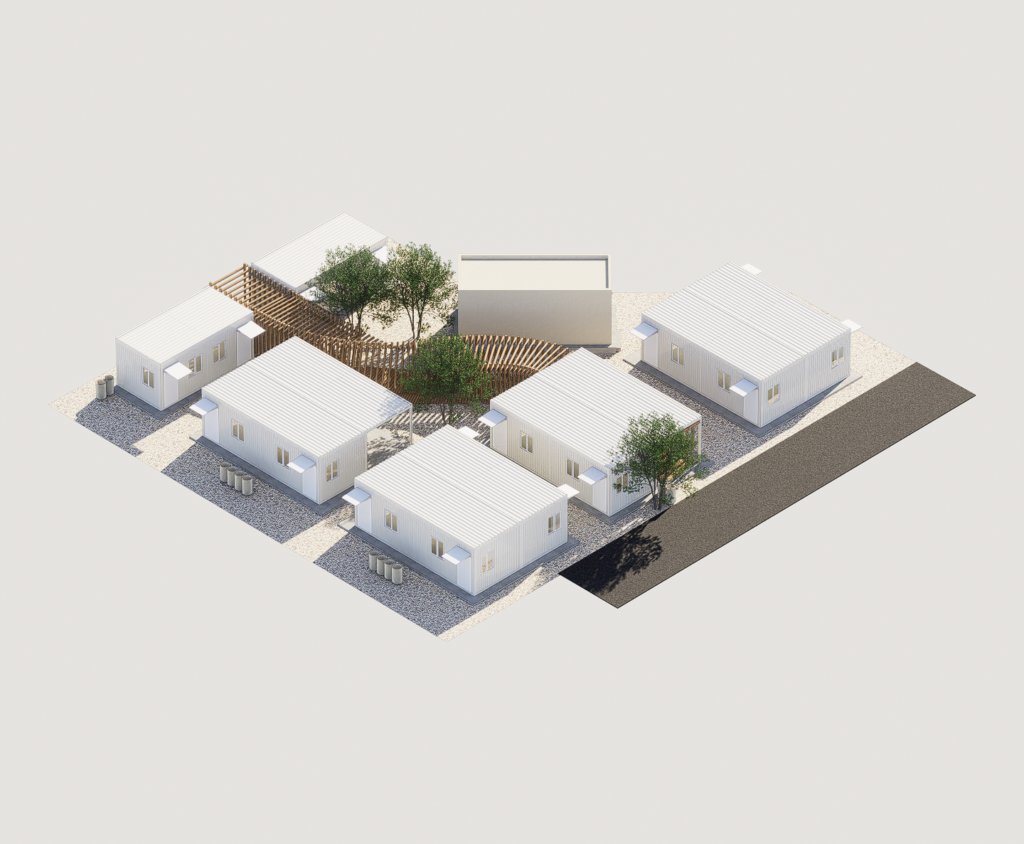
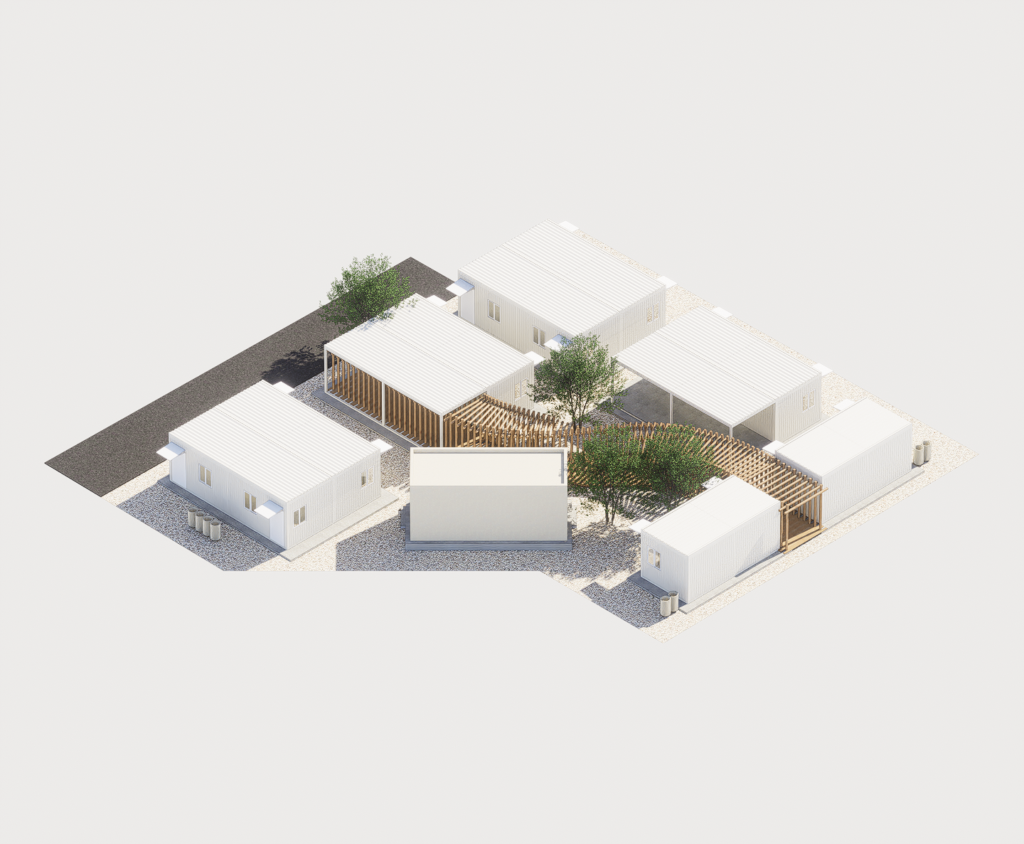
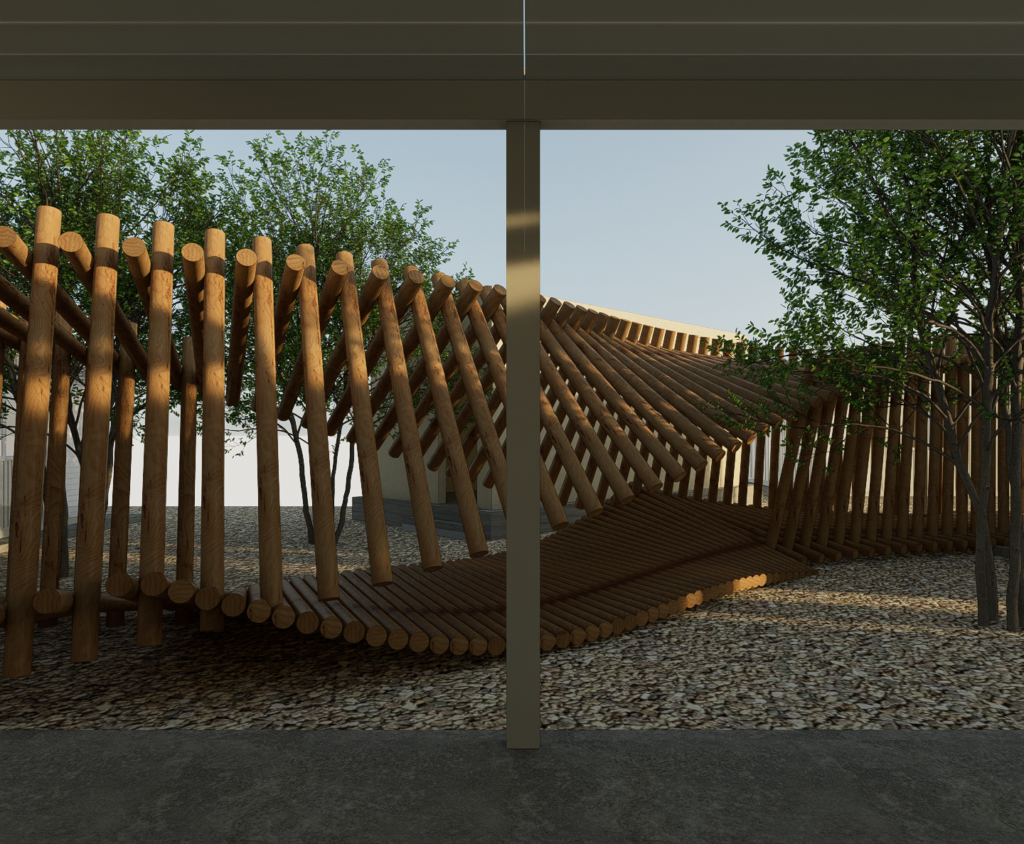

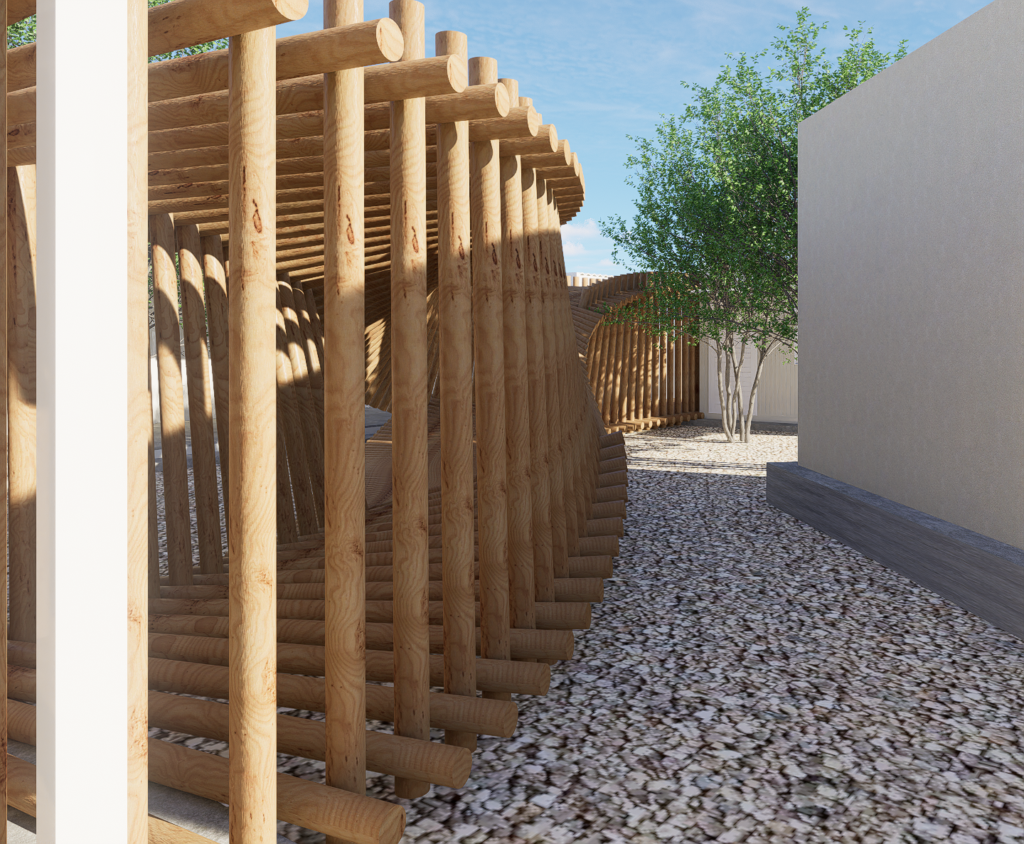
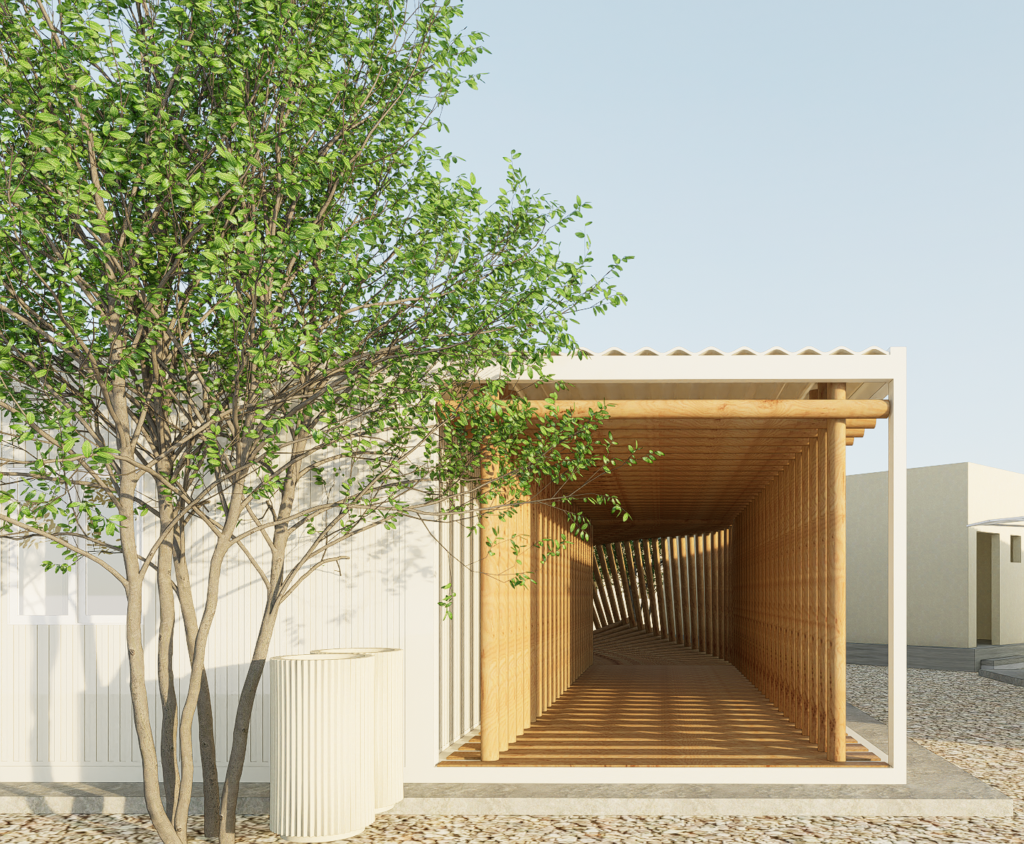
topo logs (op.3):
We faced significant challenges in hiring engineers and companies to do the foundation work during the summer. As a result, we opted for a more “do-it-yourself” approach, where the structure relies on gravity.
We developed a modular and scalable climbing bench installation as the project’s centrepiece, aligning with this approach. The design encourages the boys to engage with the structure at different levels, fostering interaction and exploration. This installation serves a functional purpose and creates an environment that invites creativity and playful engagement, aligning with our goal of providing dynamic and adaptable spaces for the children.
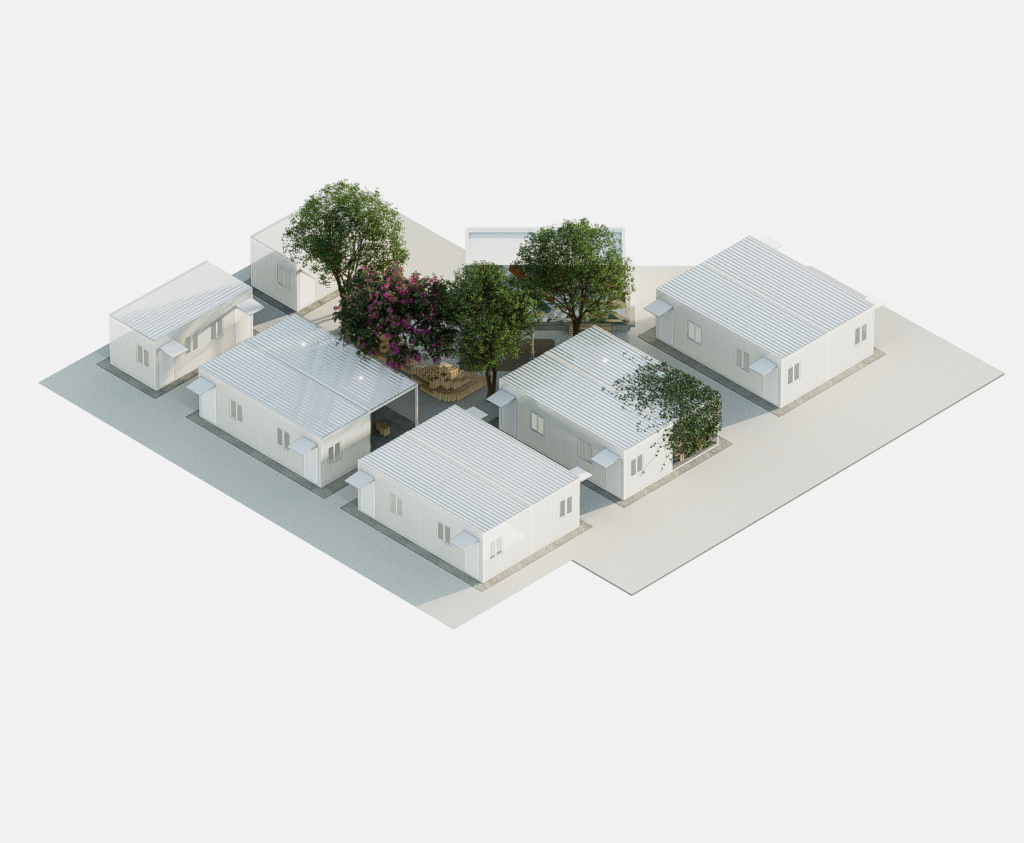
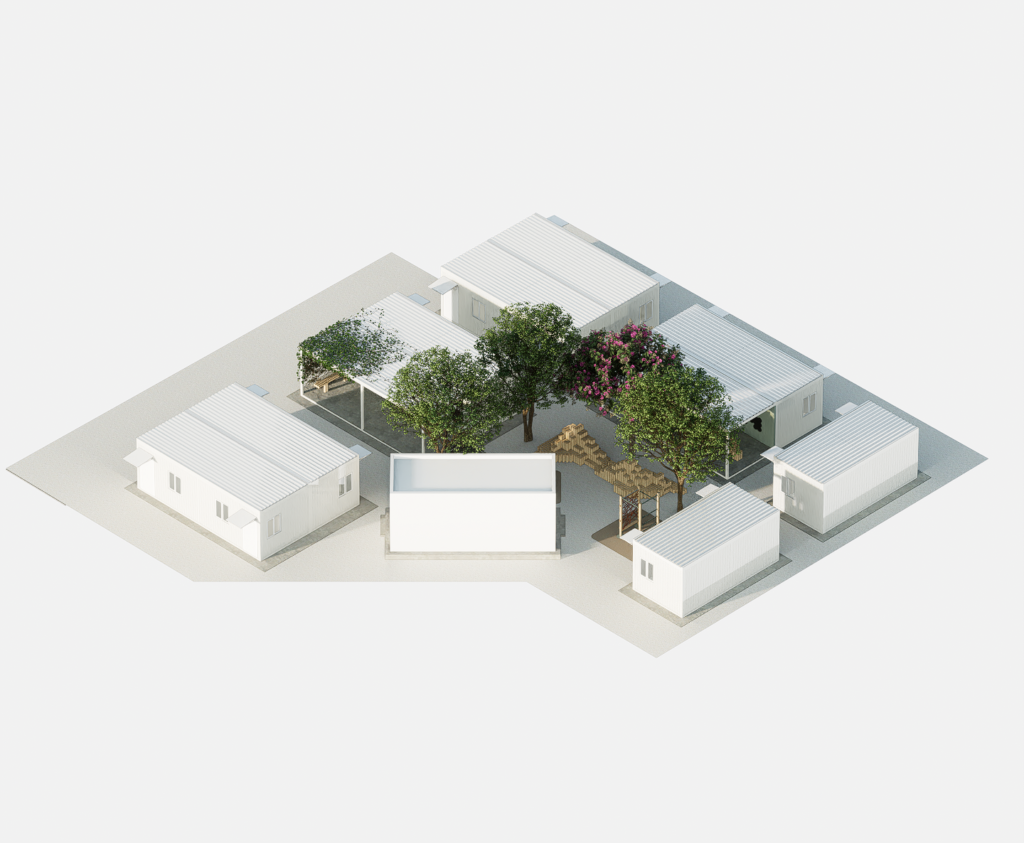
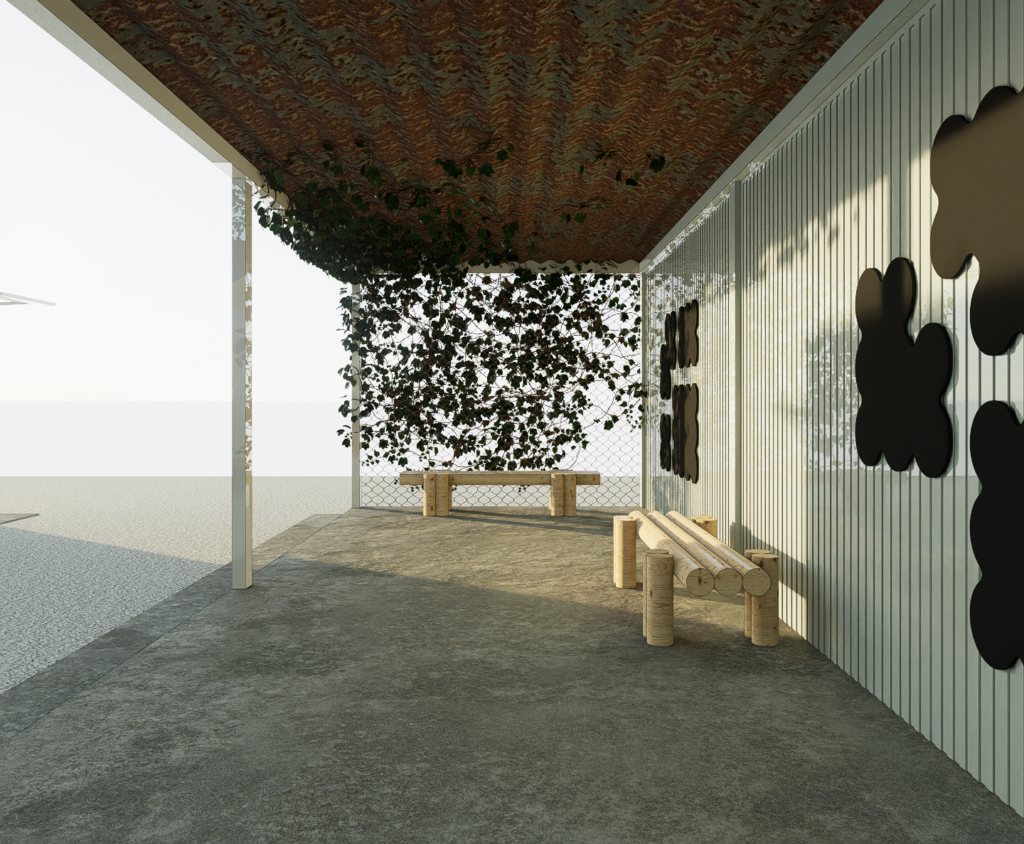
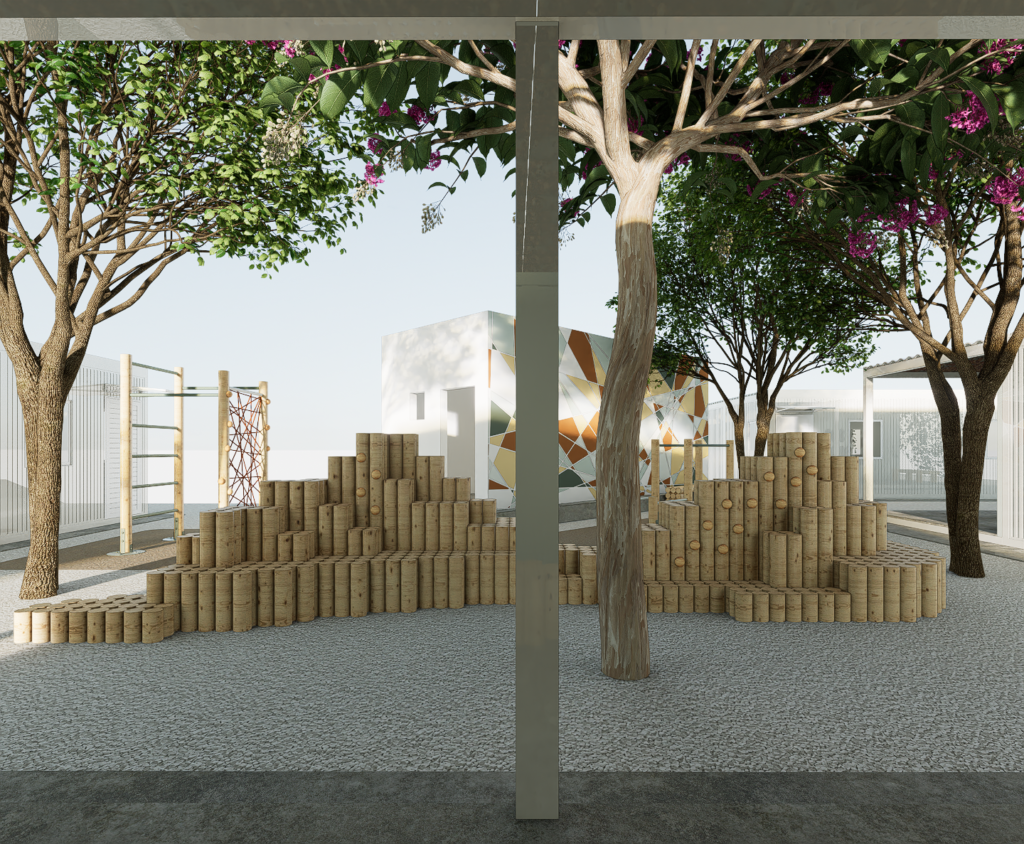
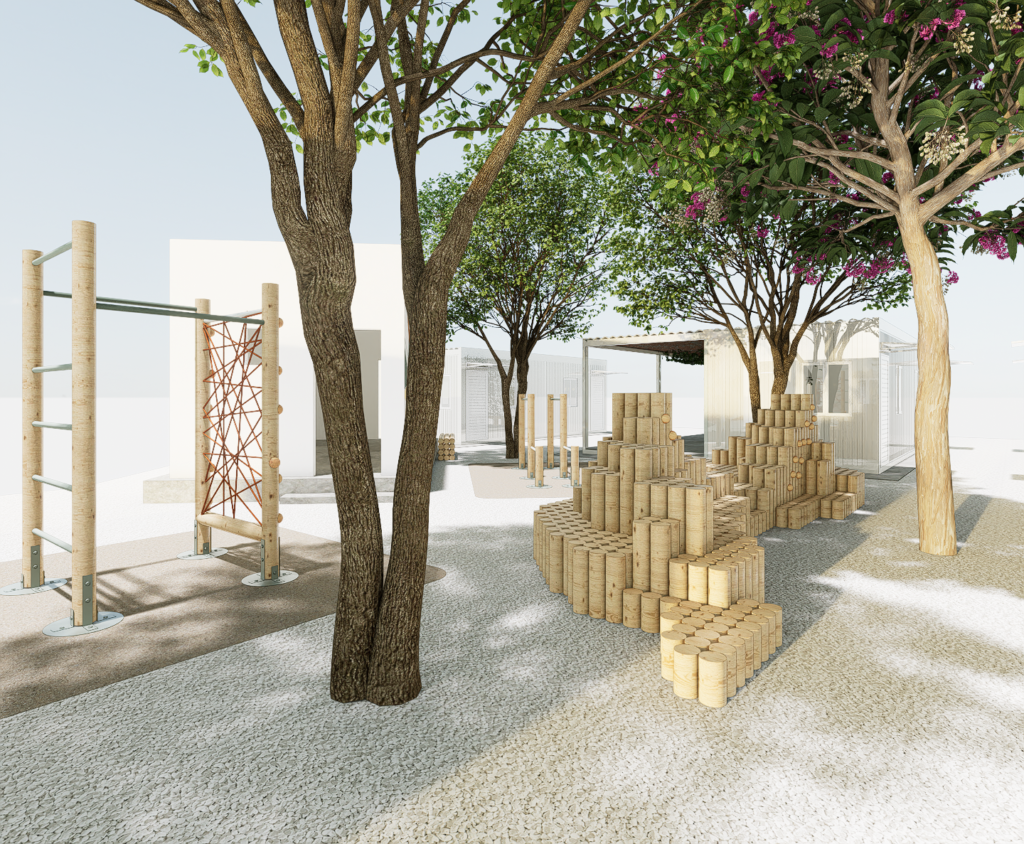
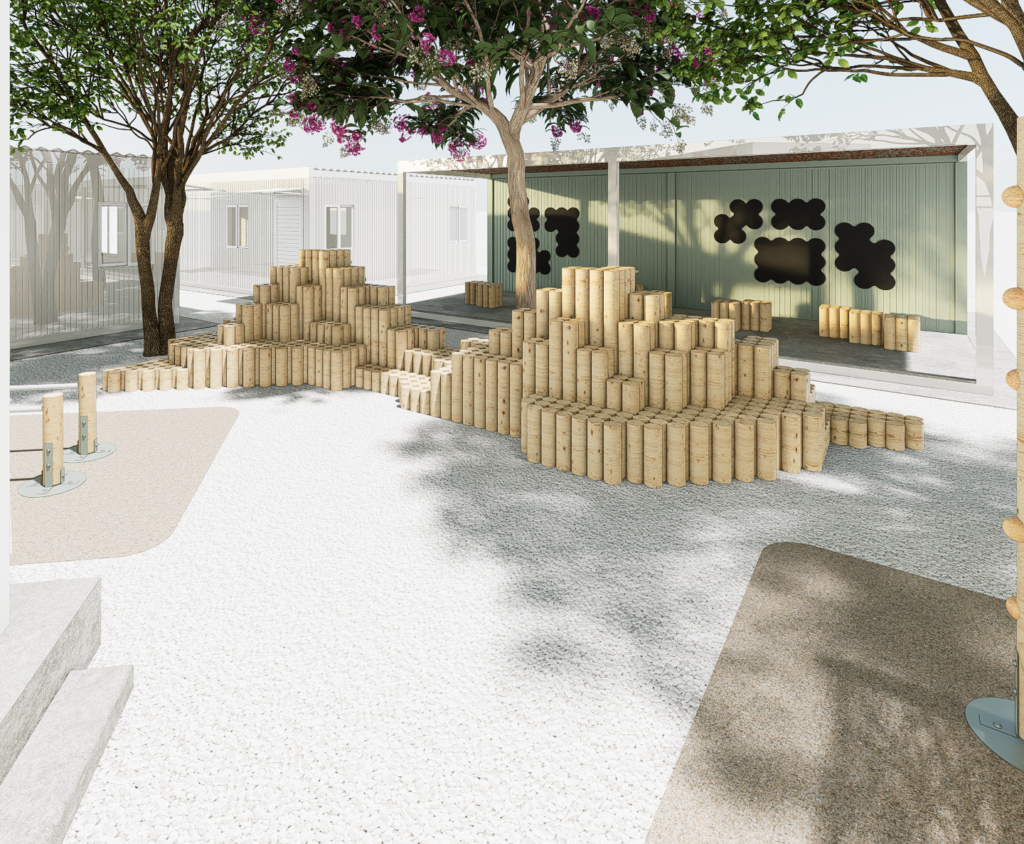
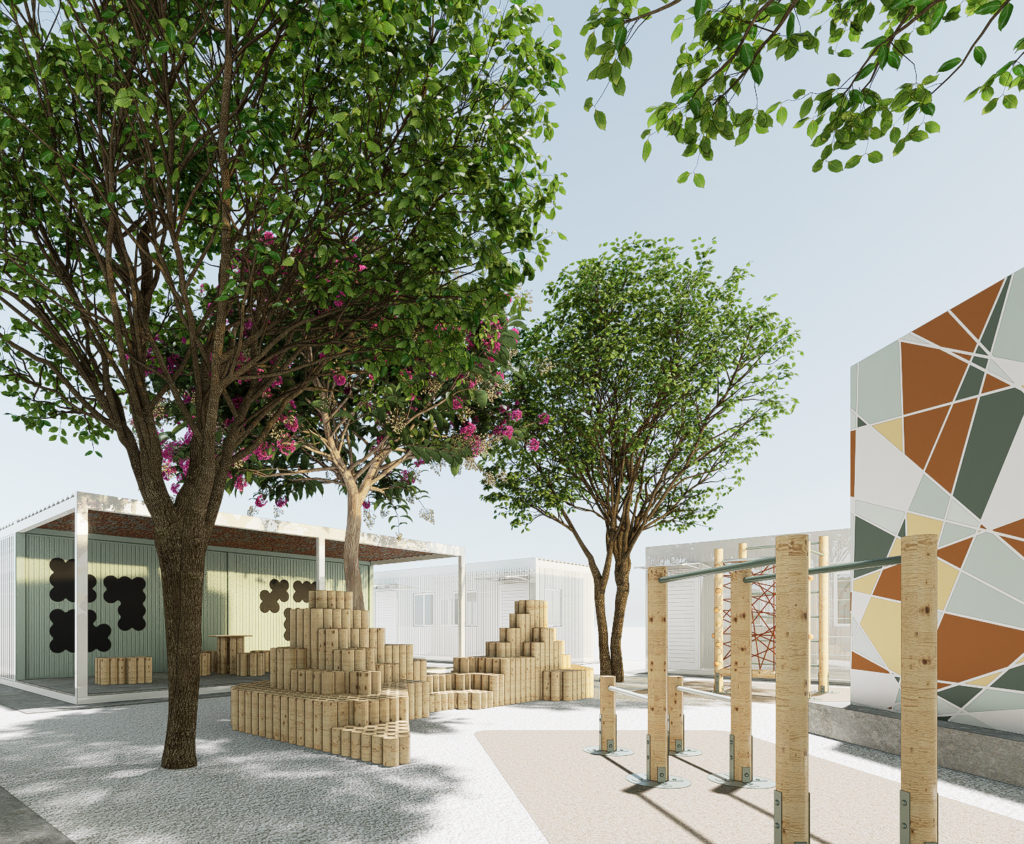
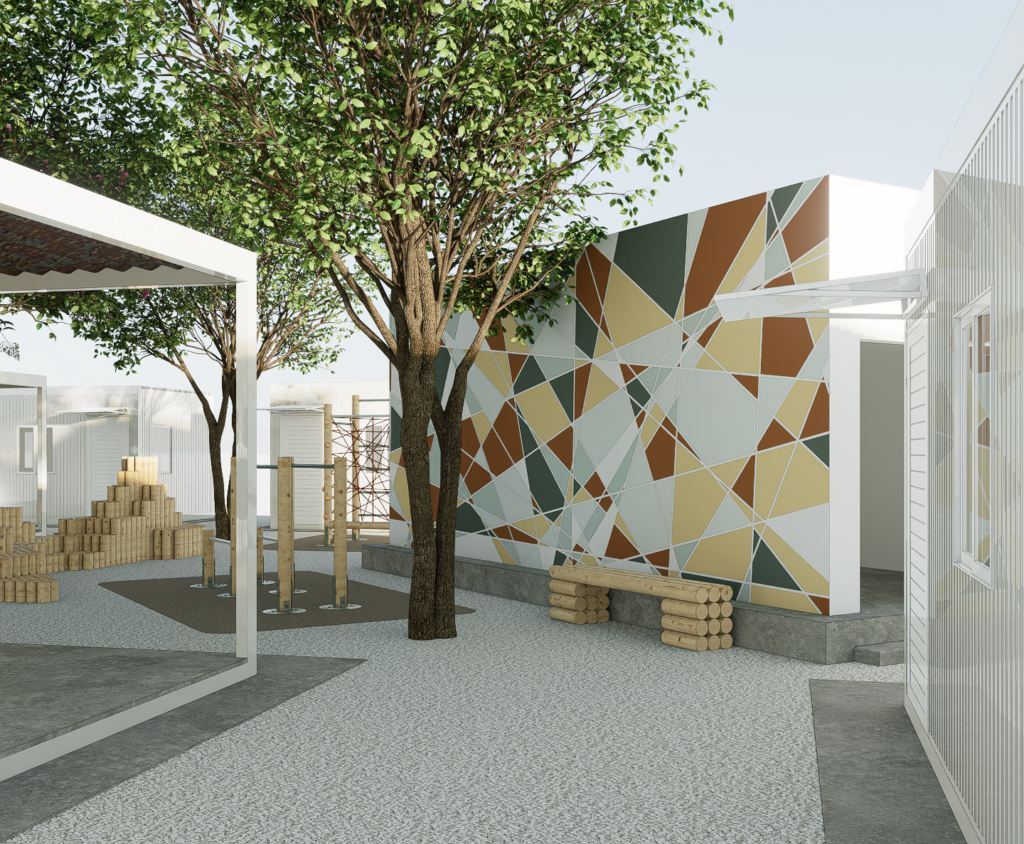


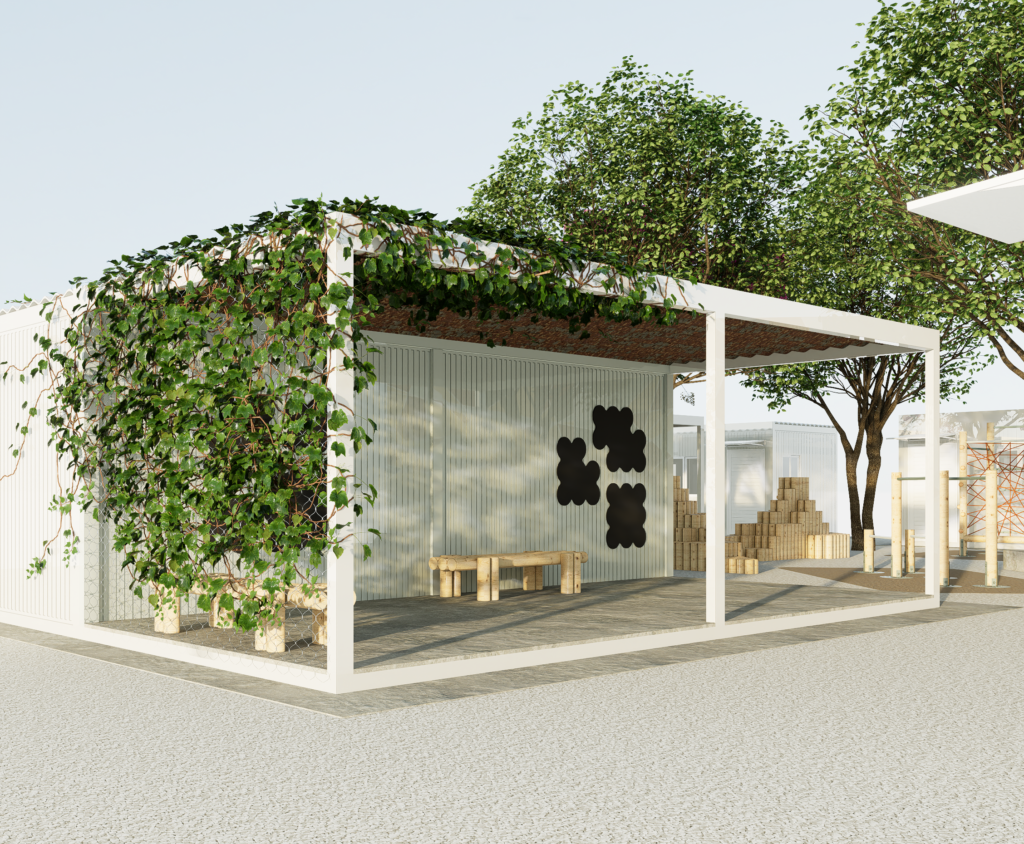

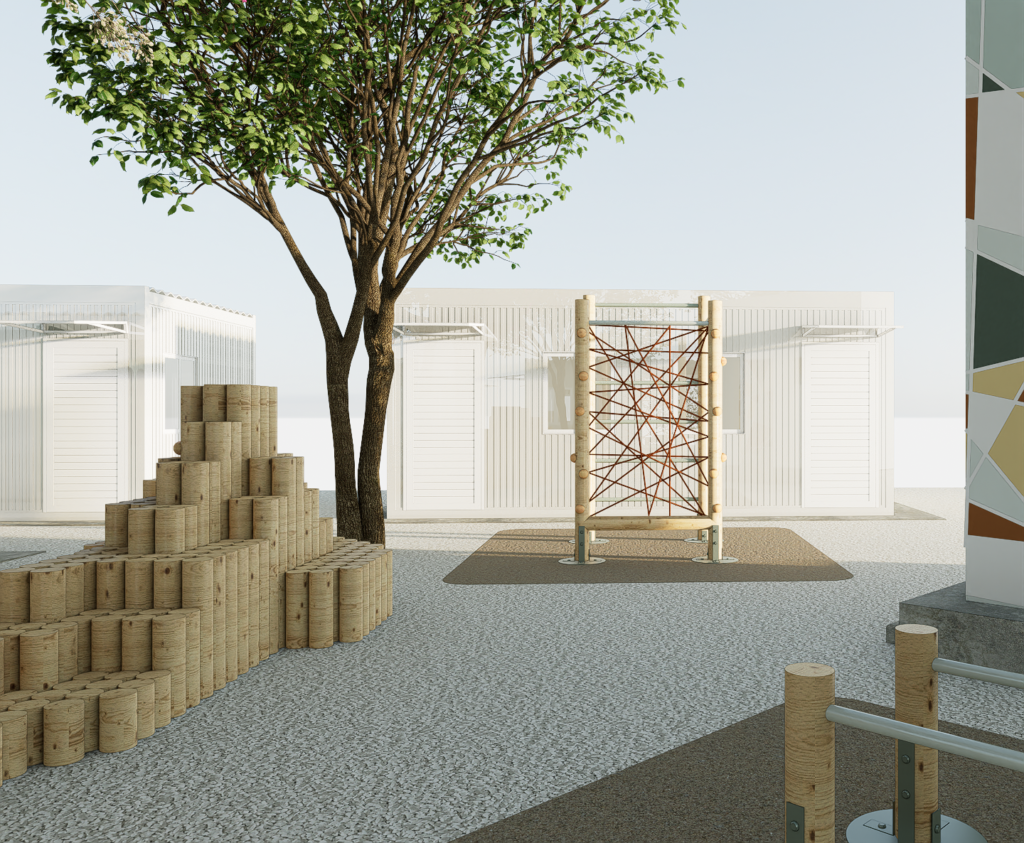
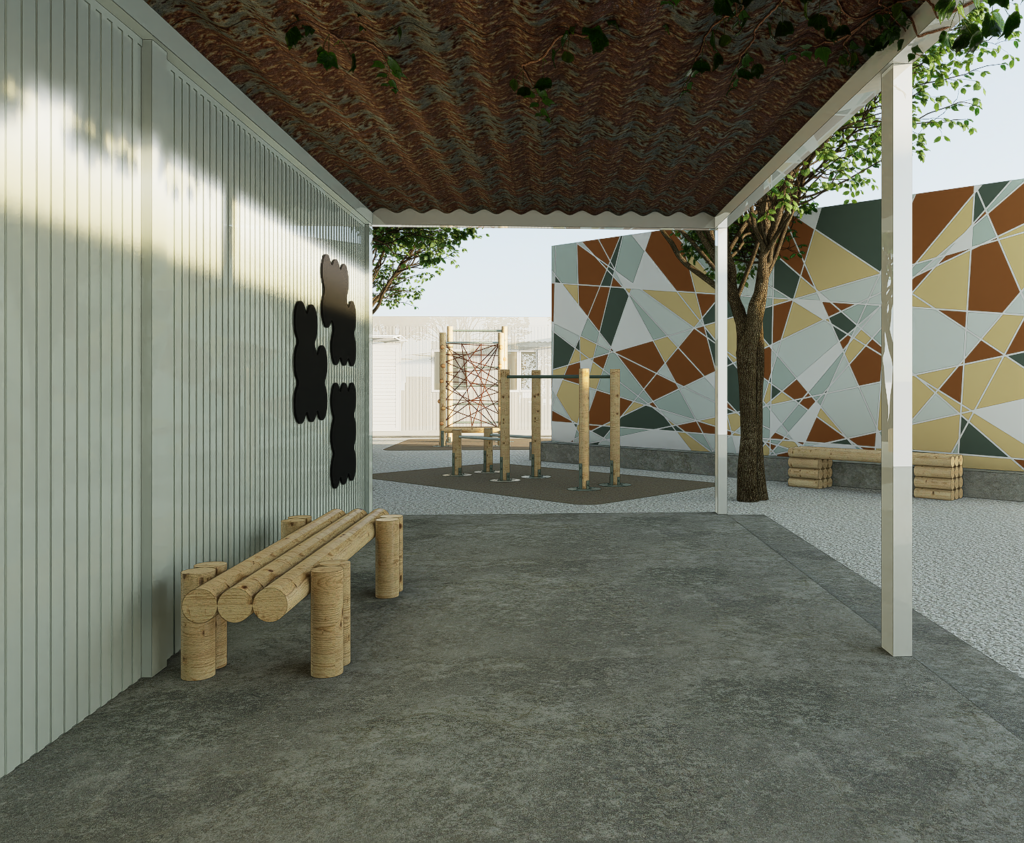
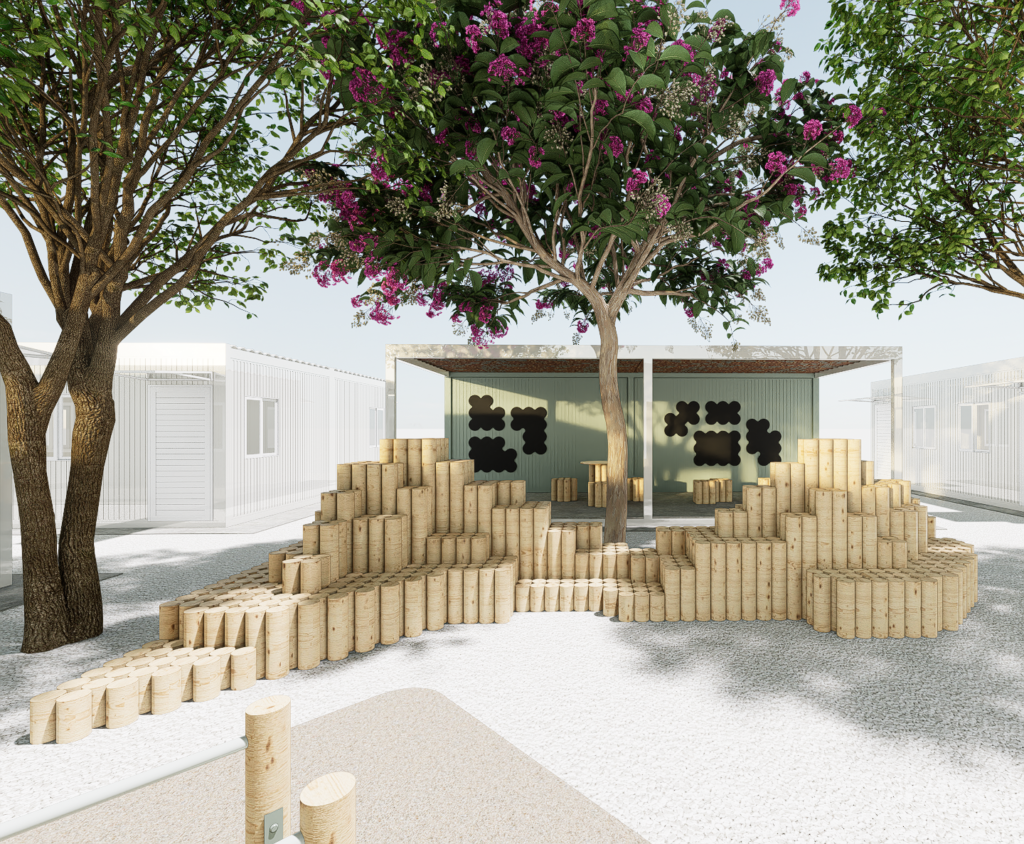
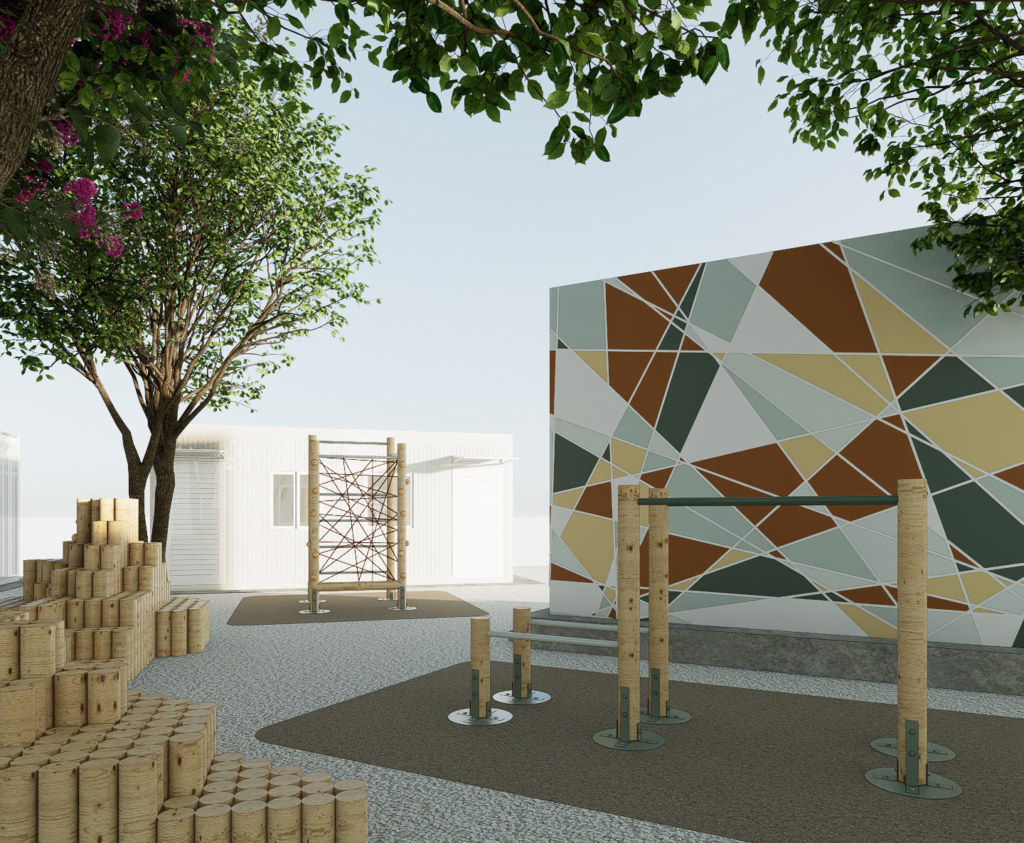
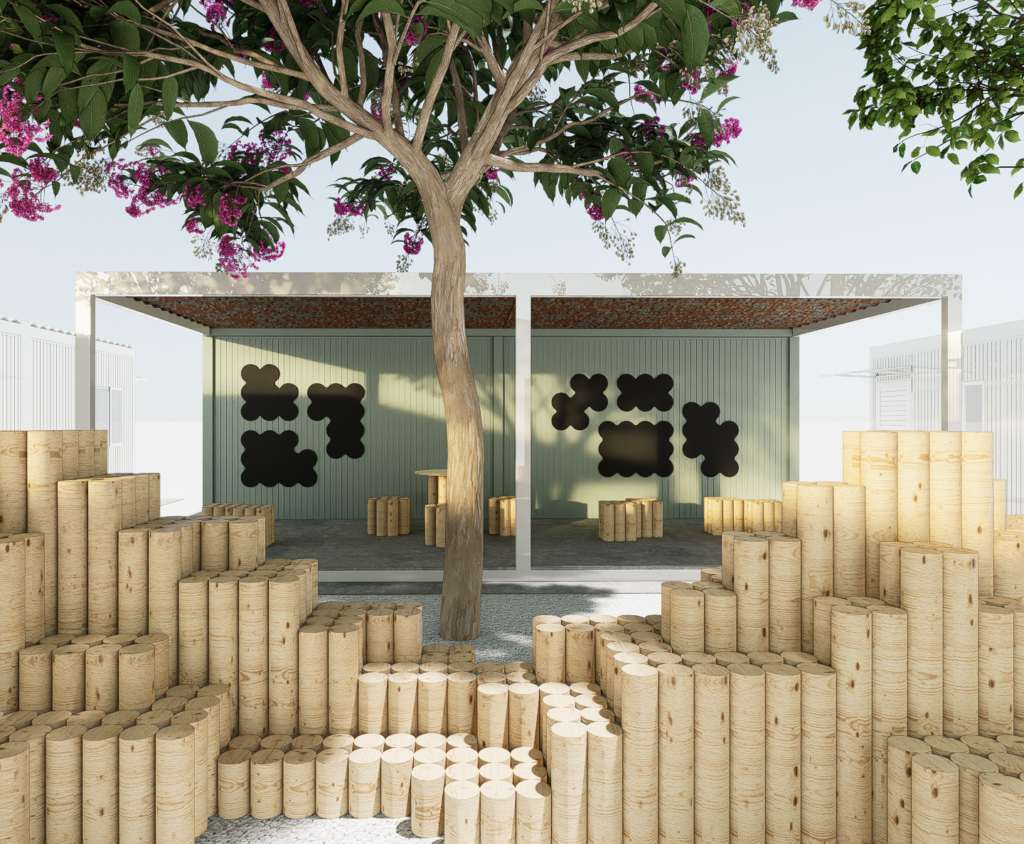
phase 3 – develop
material:
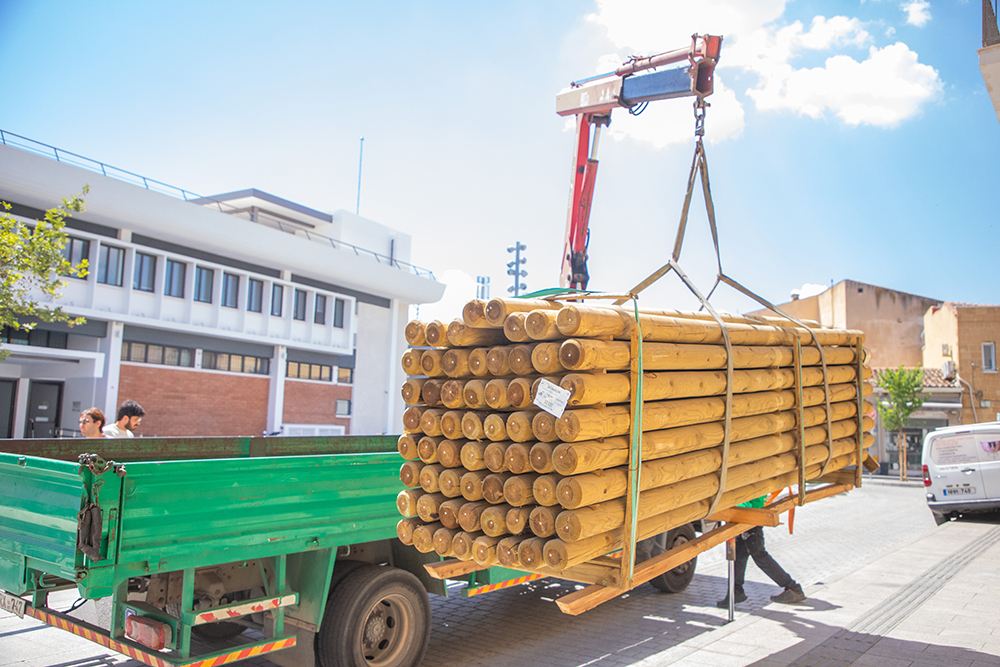

clusters:

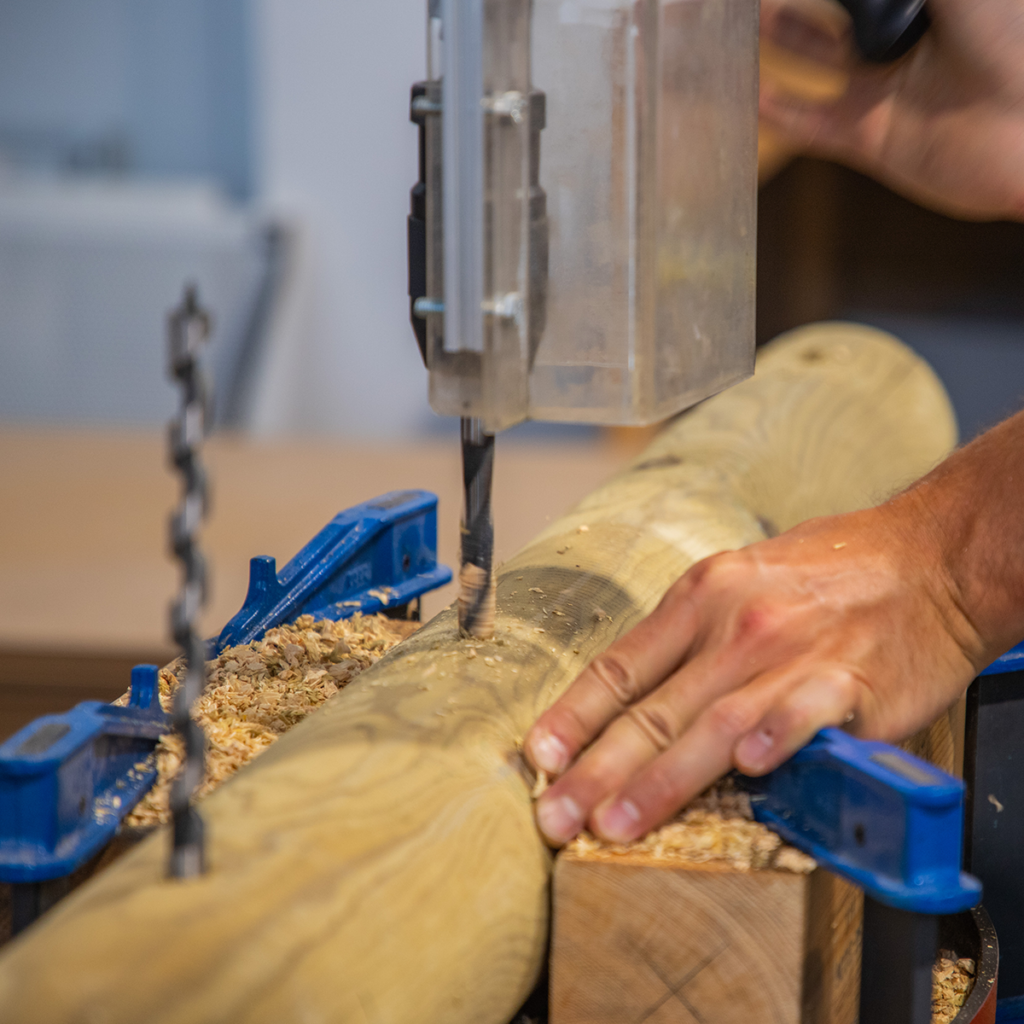
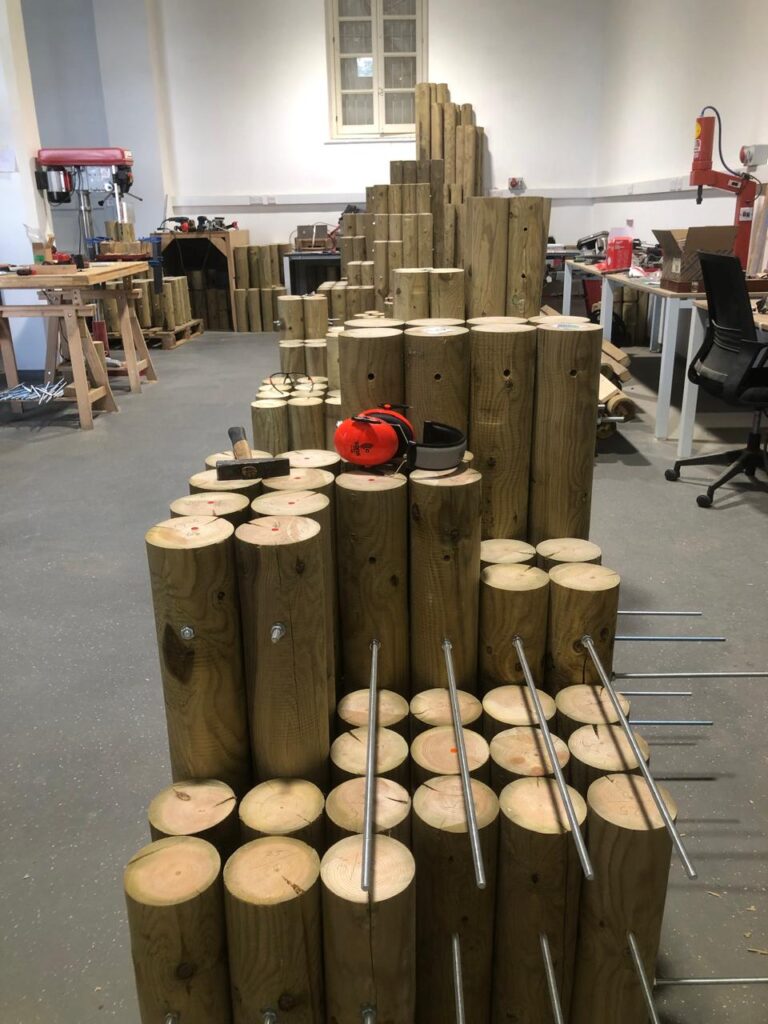

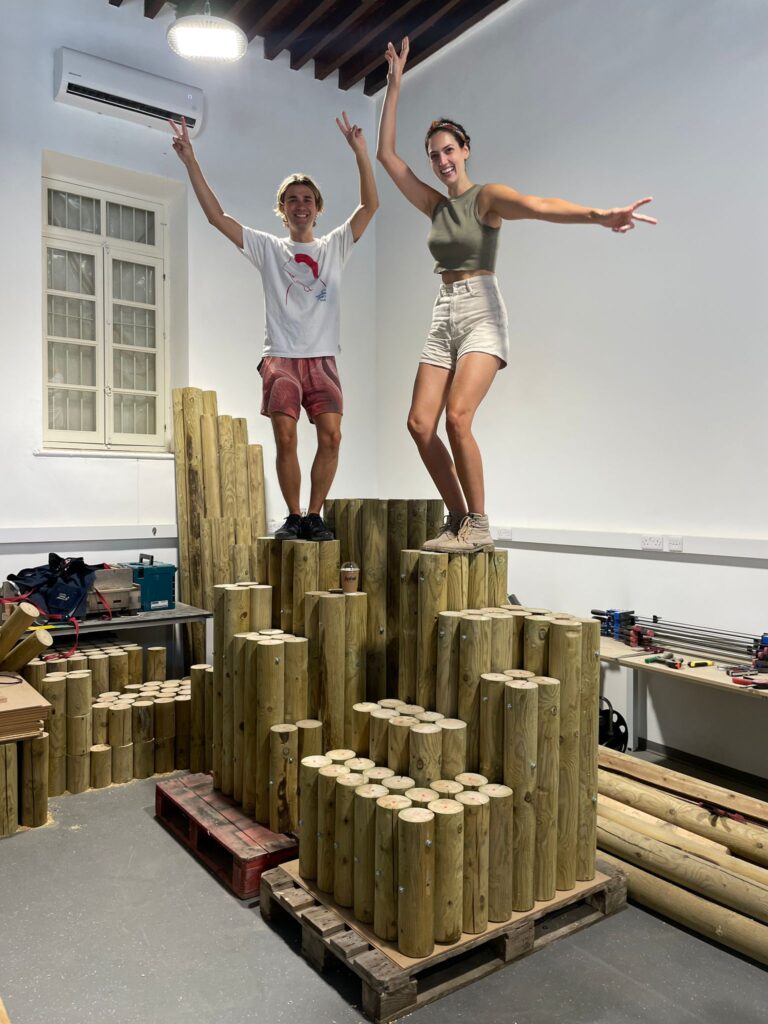
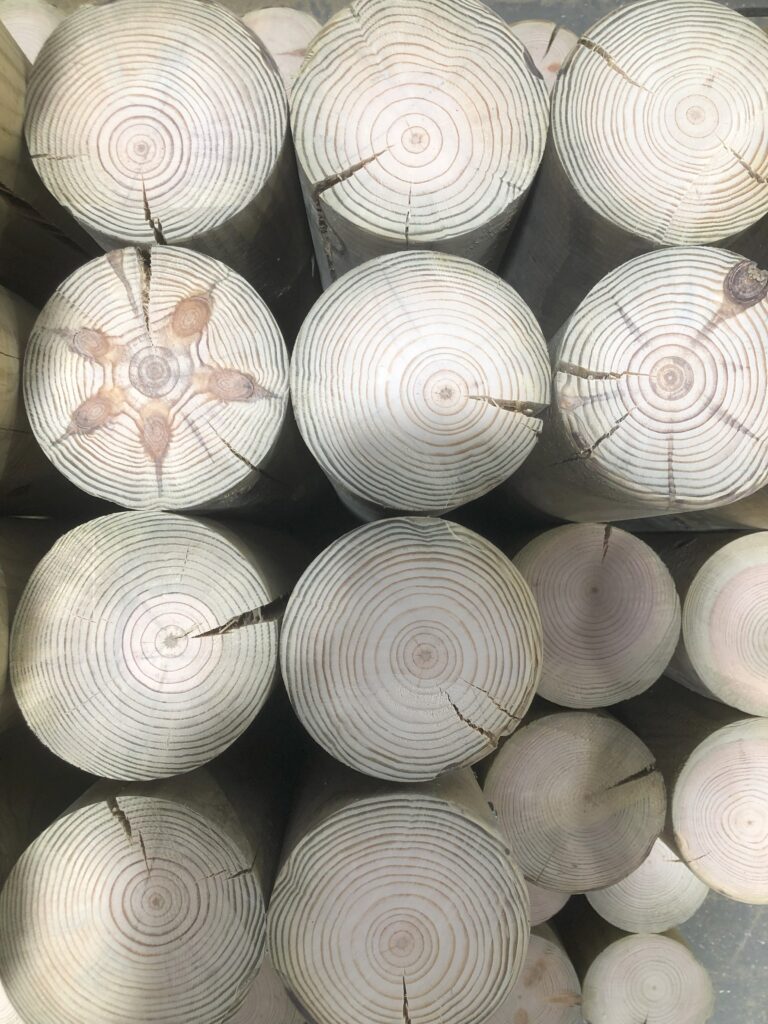
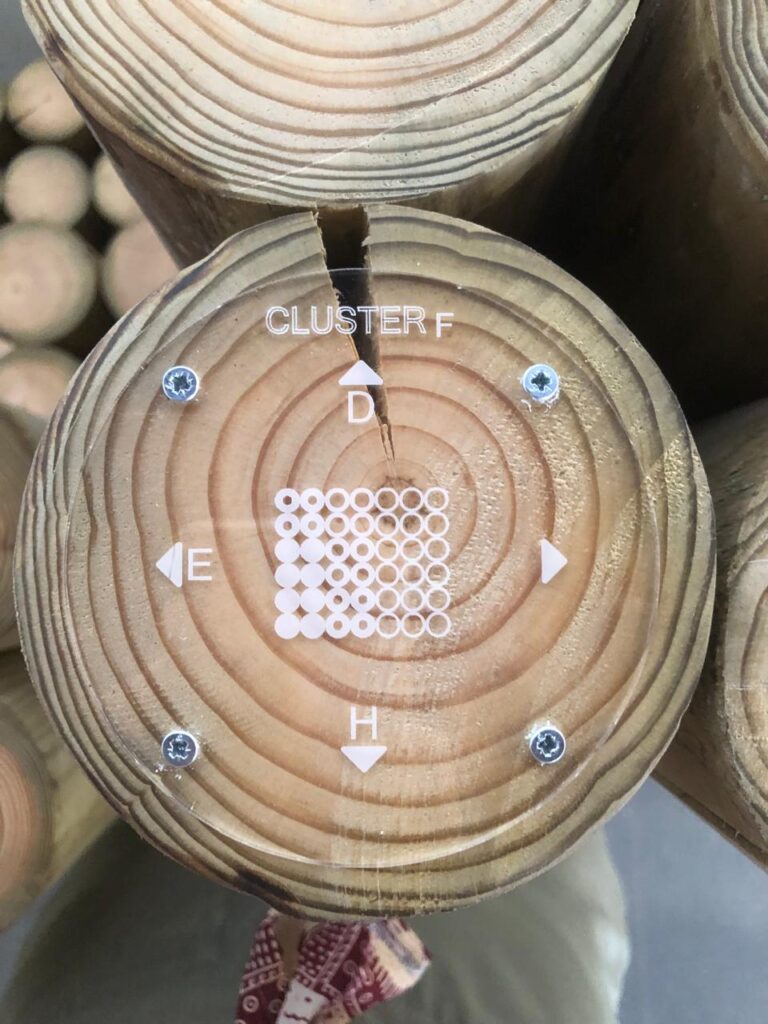
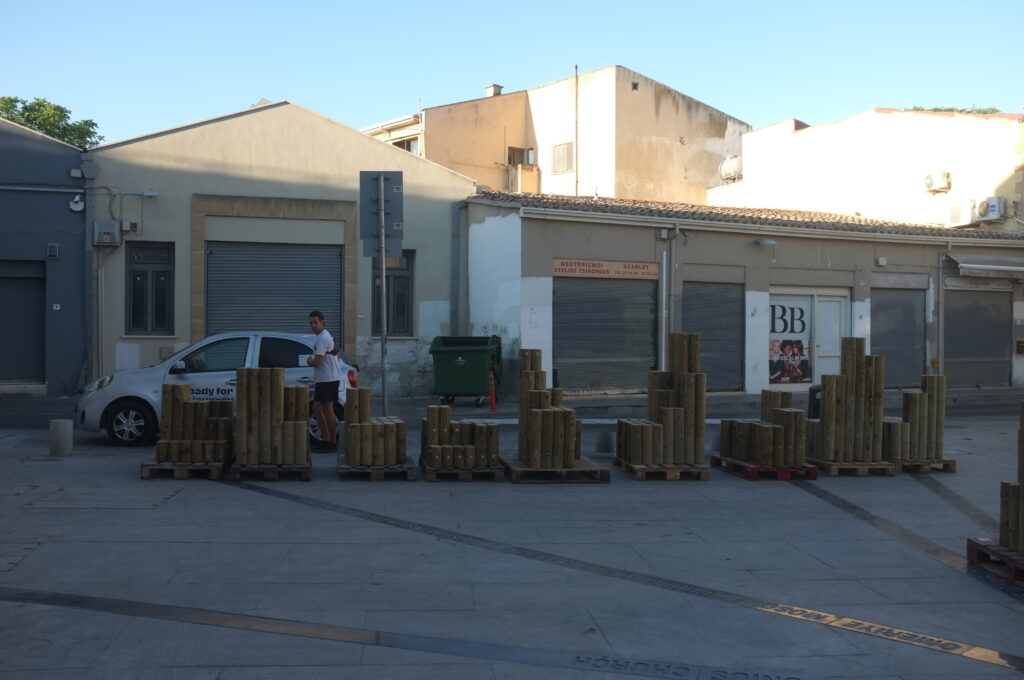
equipment:
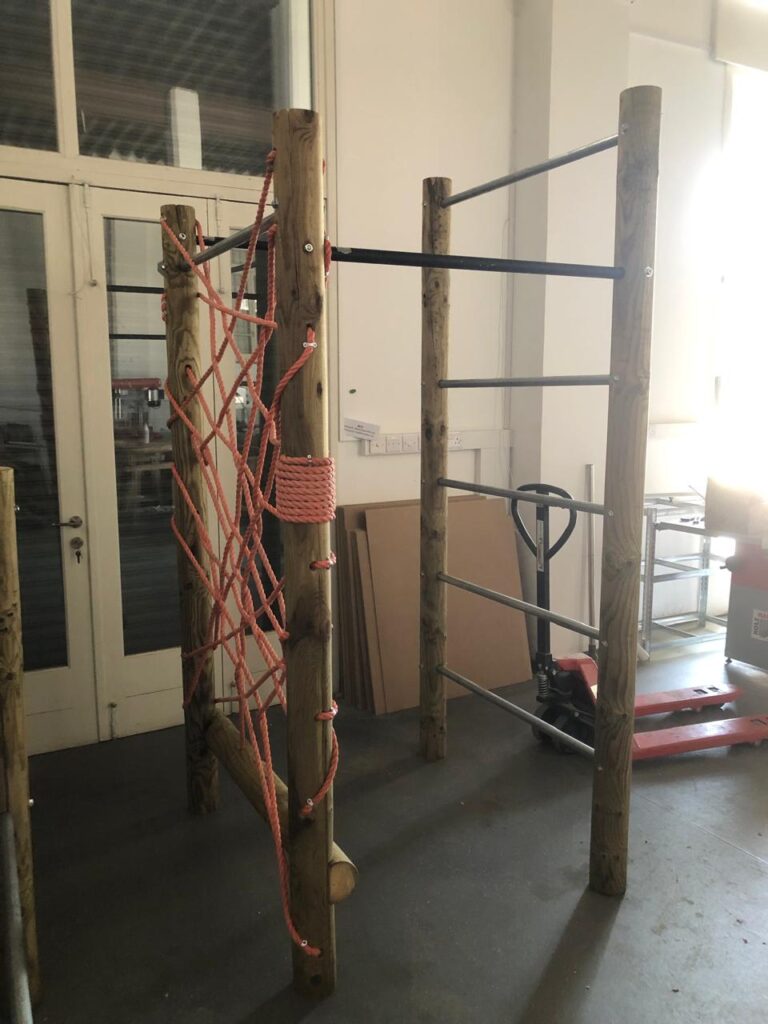
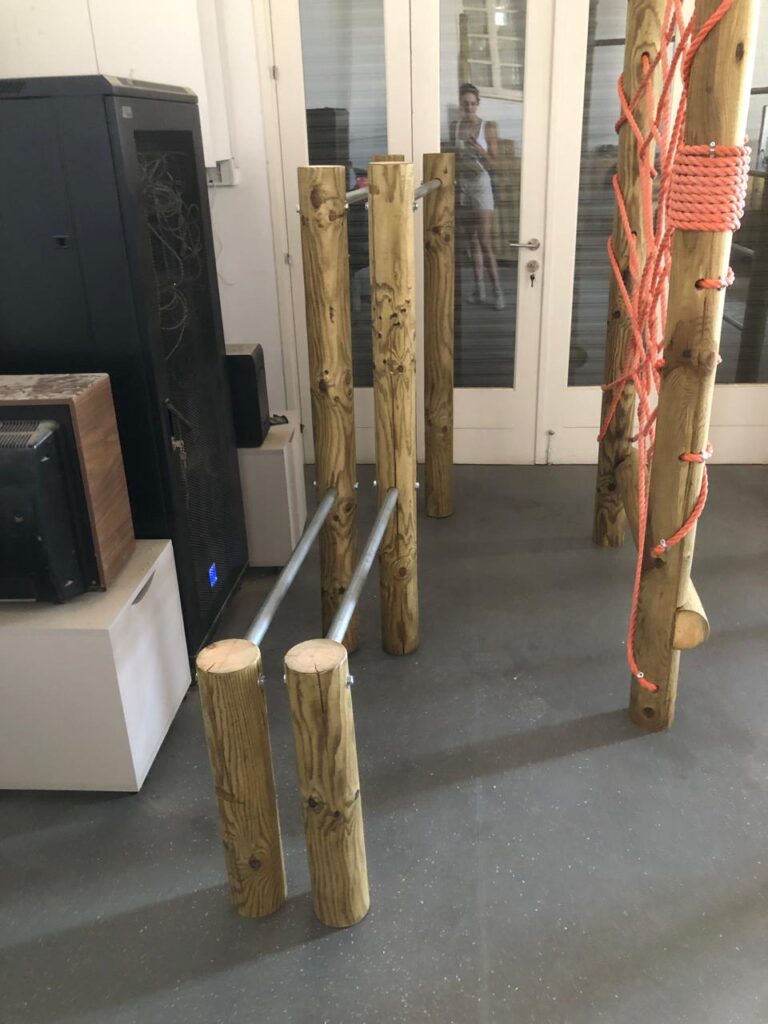
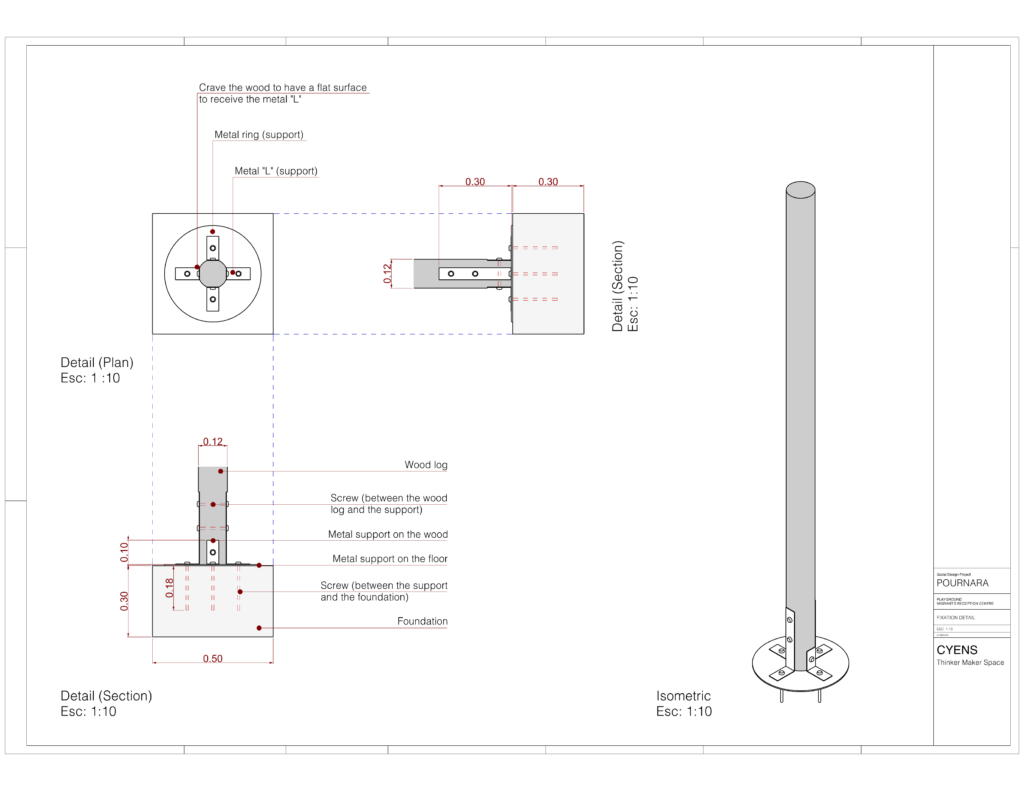

furniture:
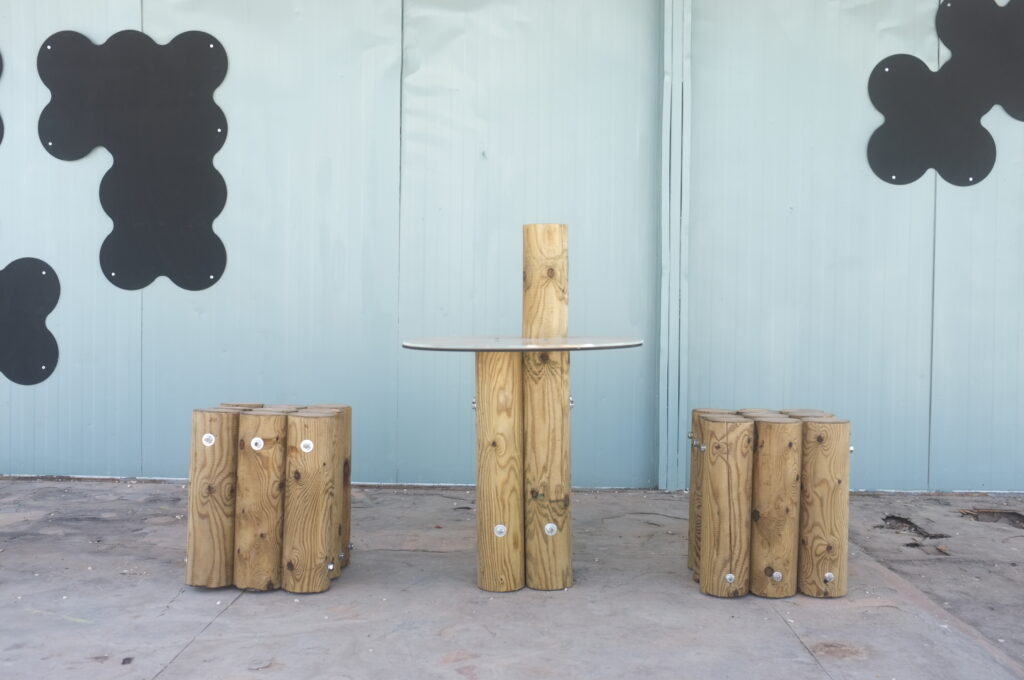
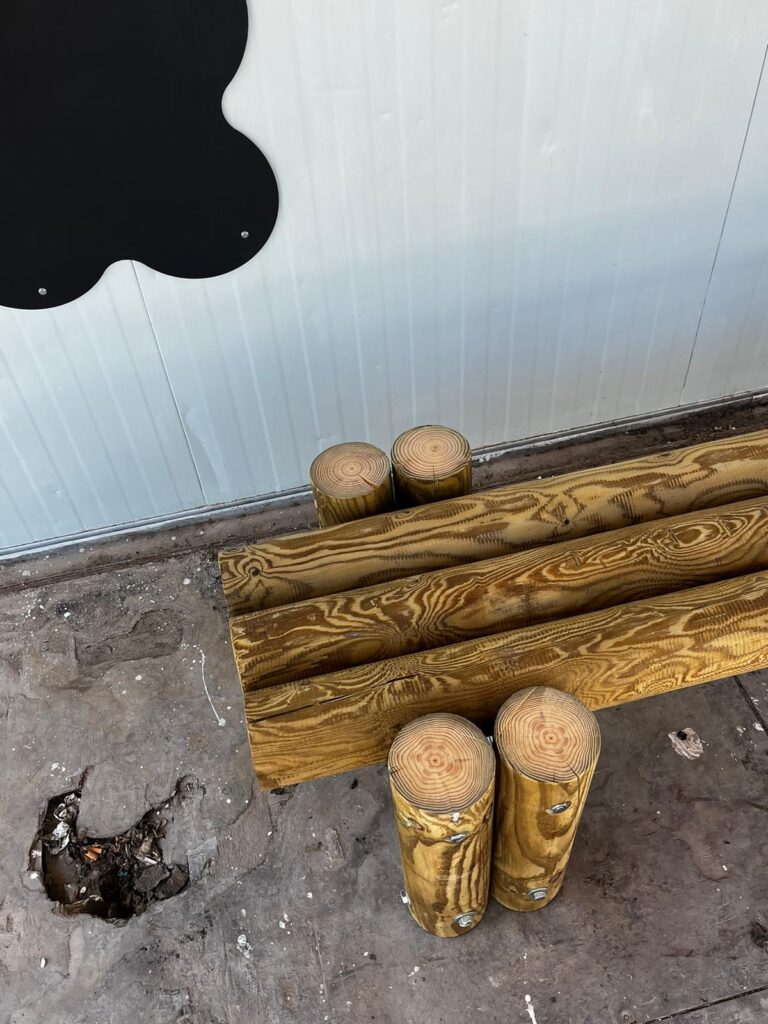
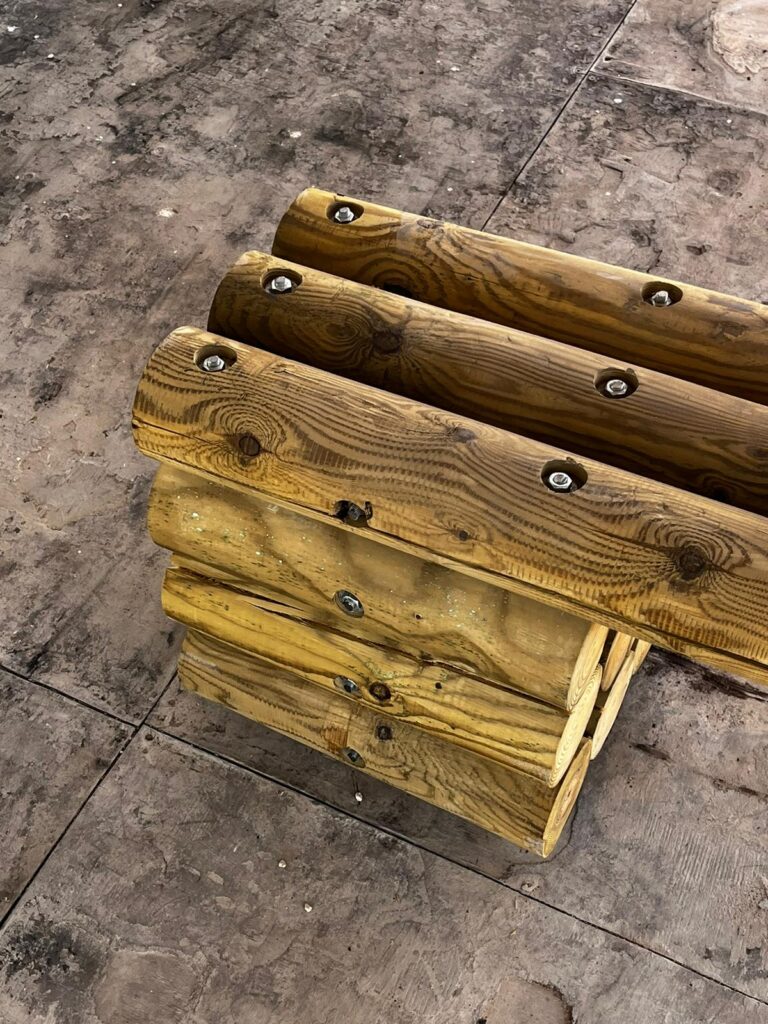
chalkboard:
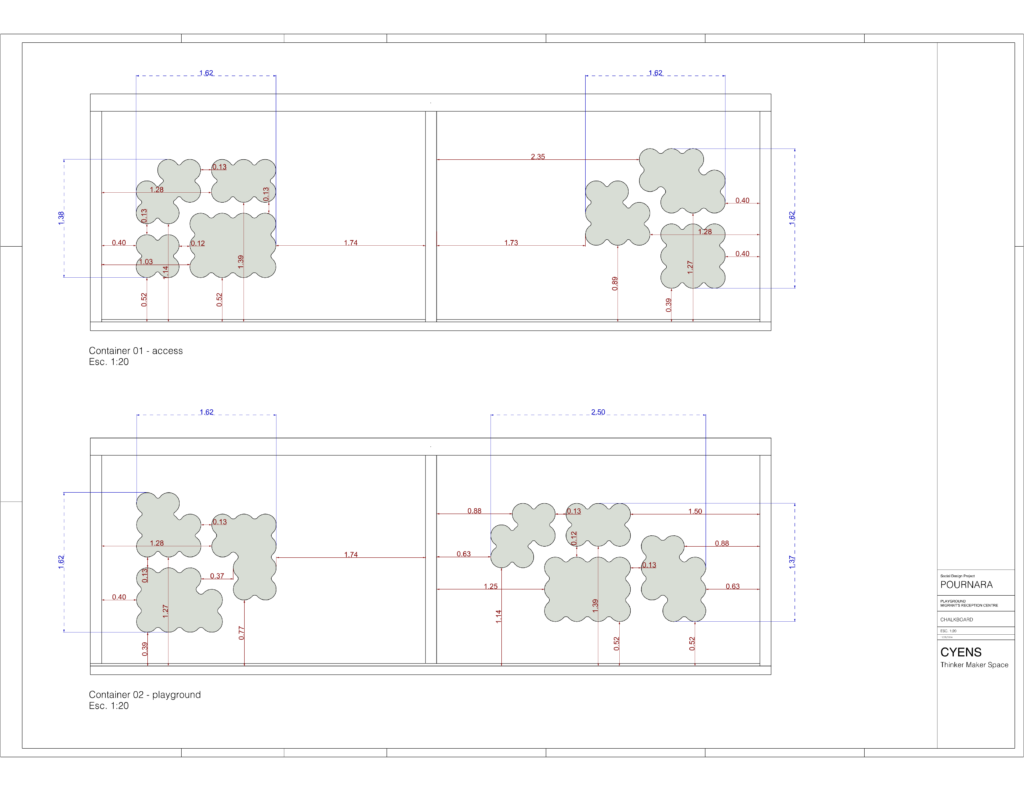
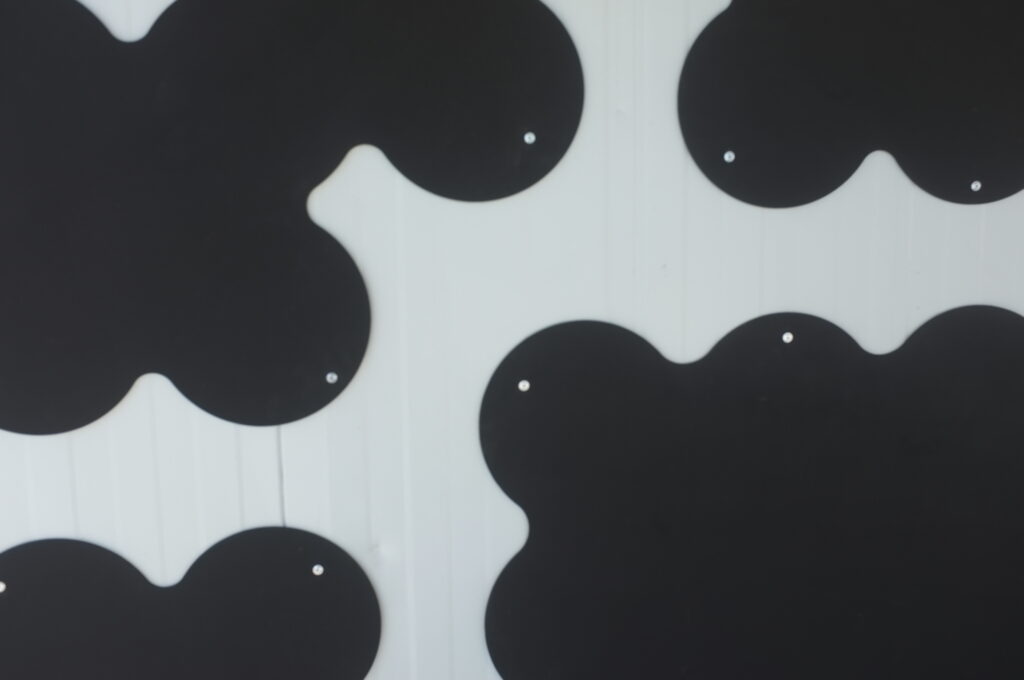
phase 4 – deliver
renovation of the two containers:
As part of our ongoing efforts, we also renovated two containers that had been damaged by fire. This included painting the containers, adding furniture, and installing laser-cut panels coated with chalkboard paint. These containers now serve as spaces for relaxation and artistic expression, which aligns with the boys’ desire, as observed during the workshop, to have a place to draw and unwind.
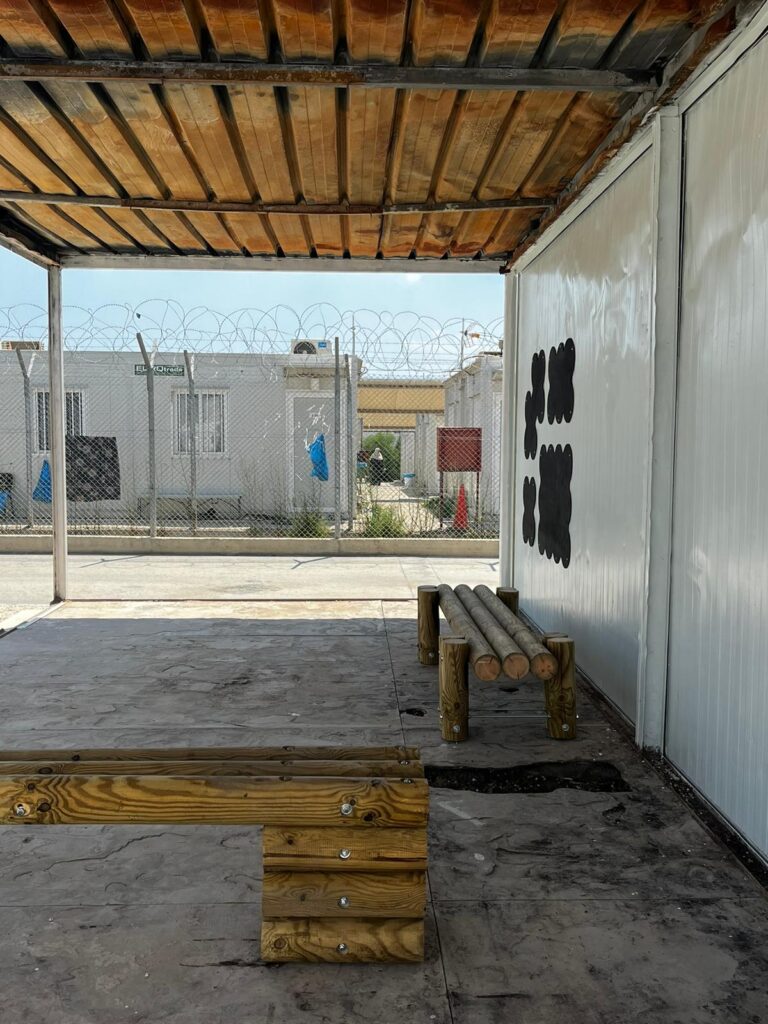
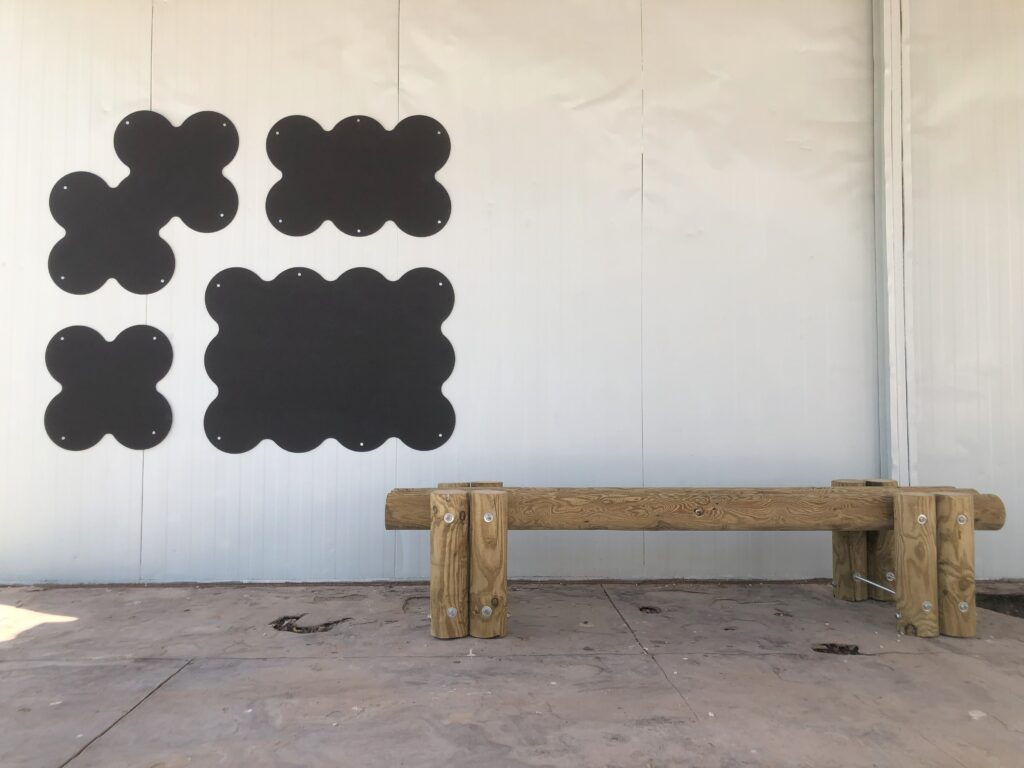
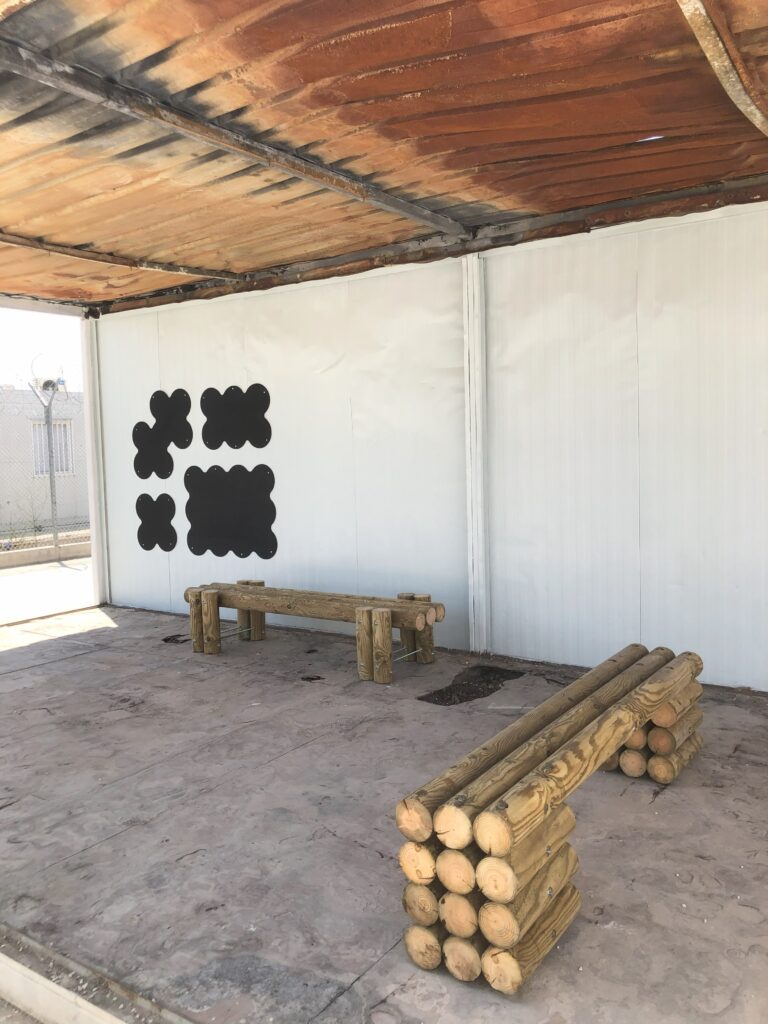
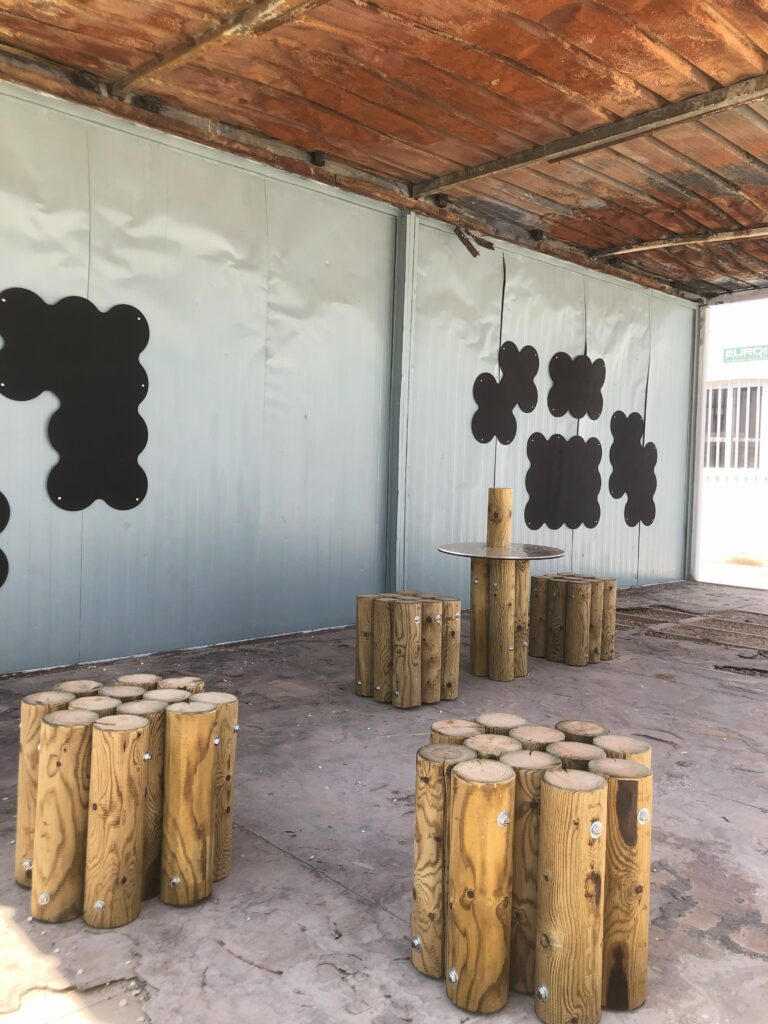
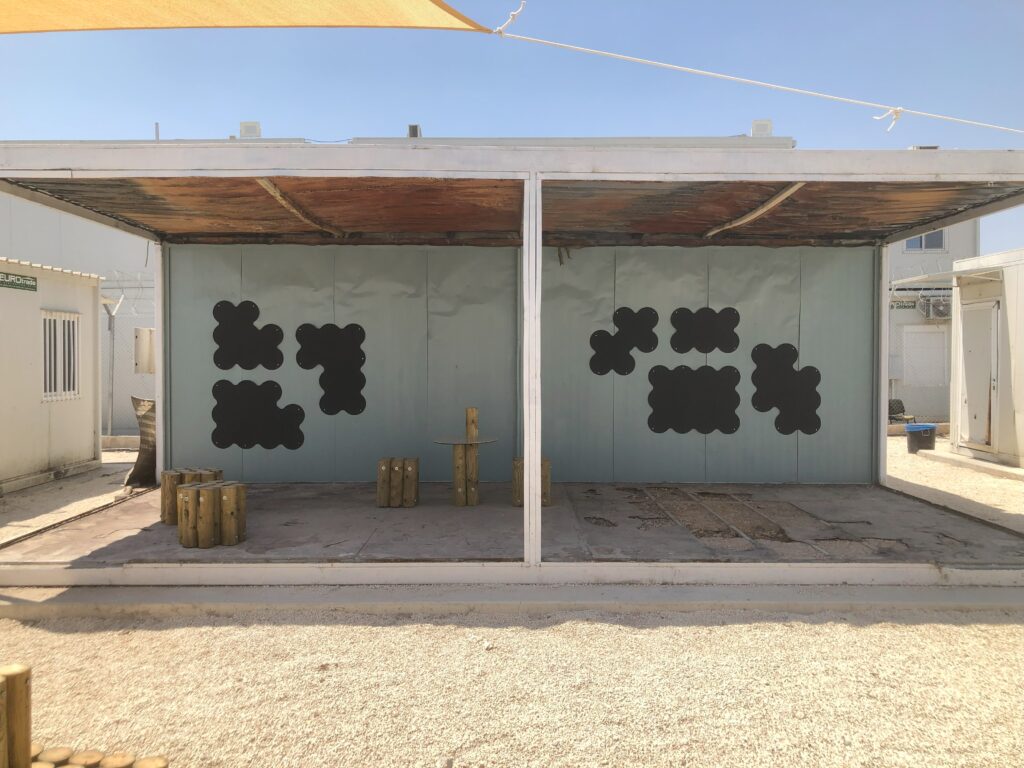
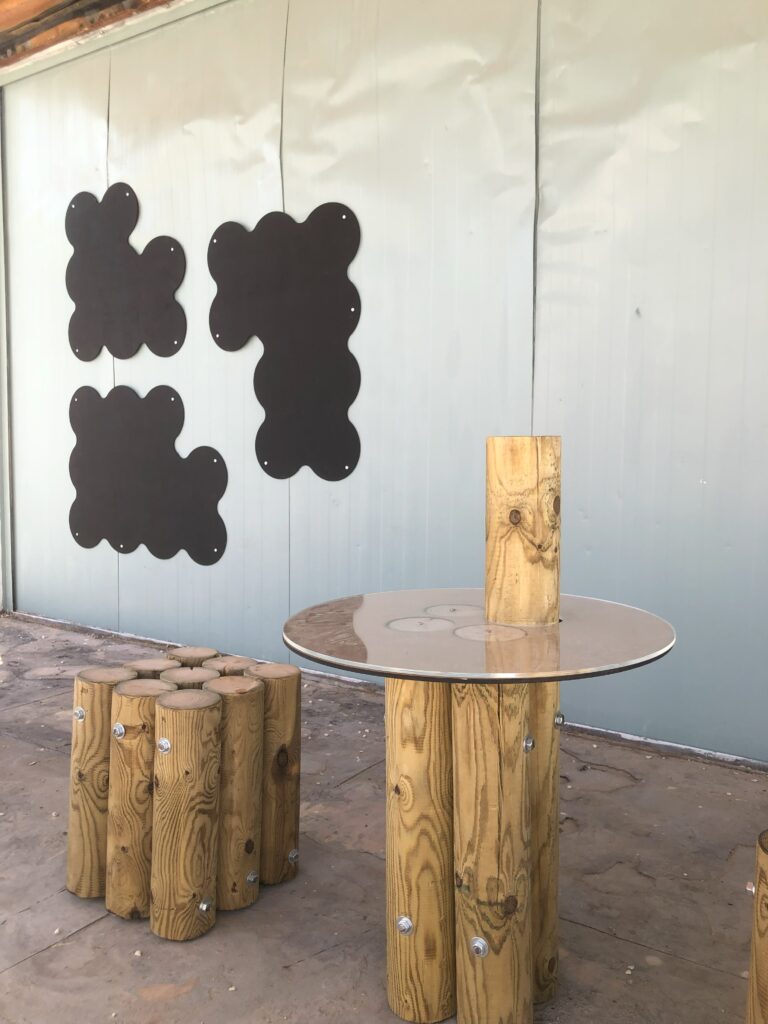
topo logs – climbing bench:
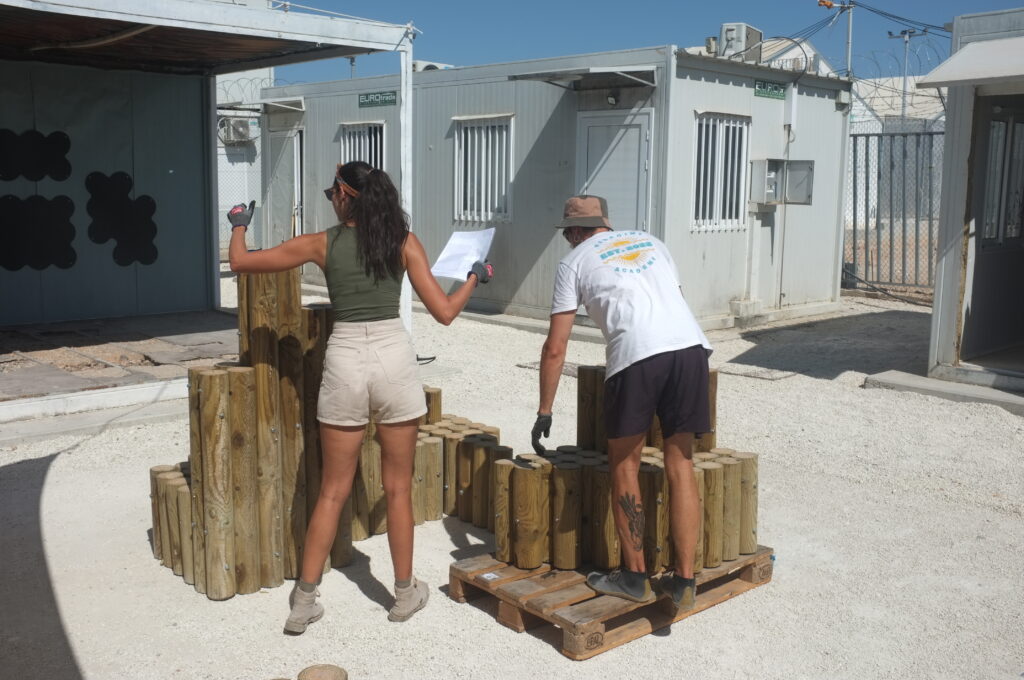
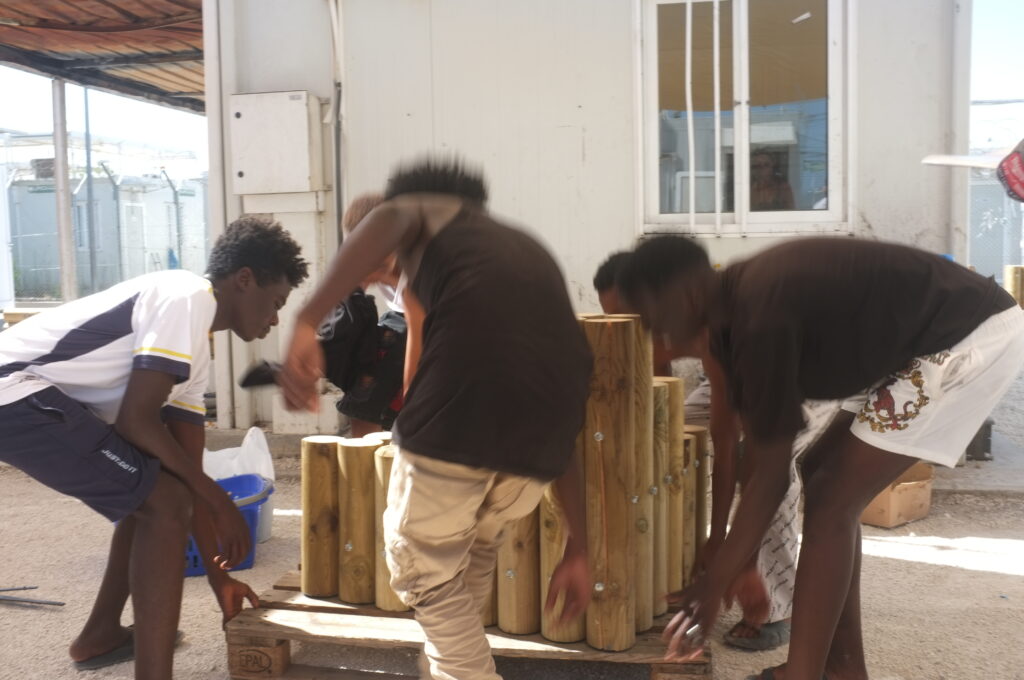
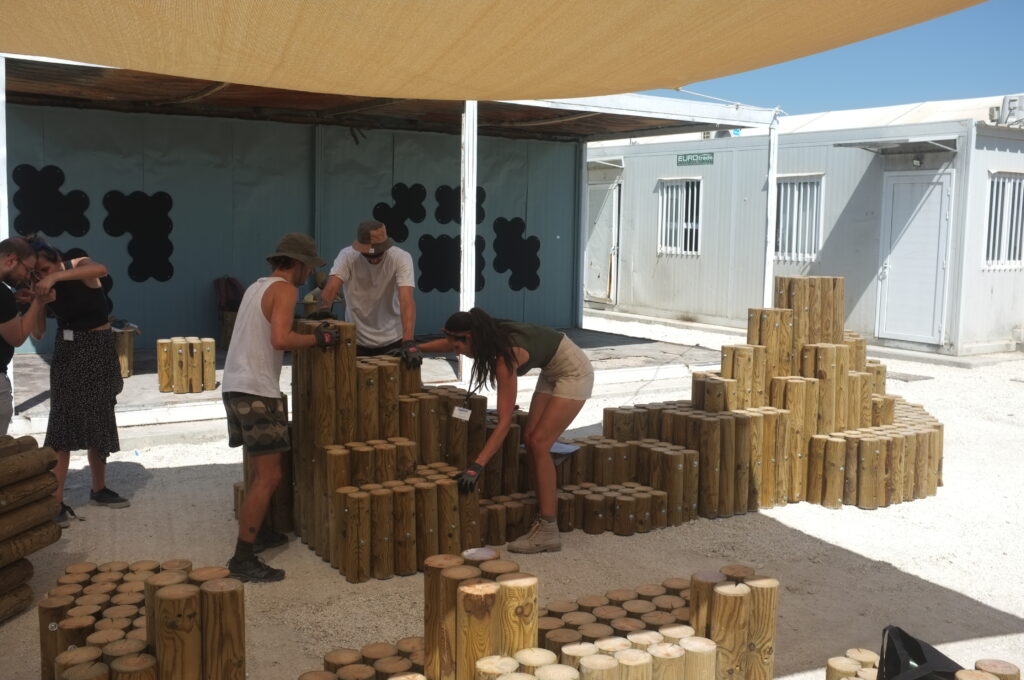


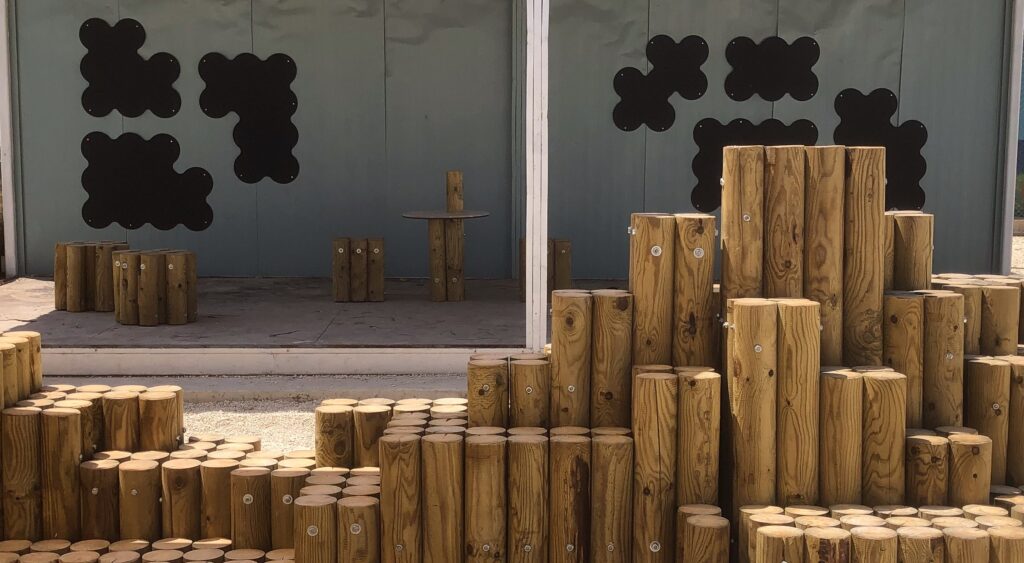
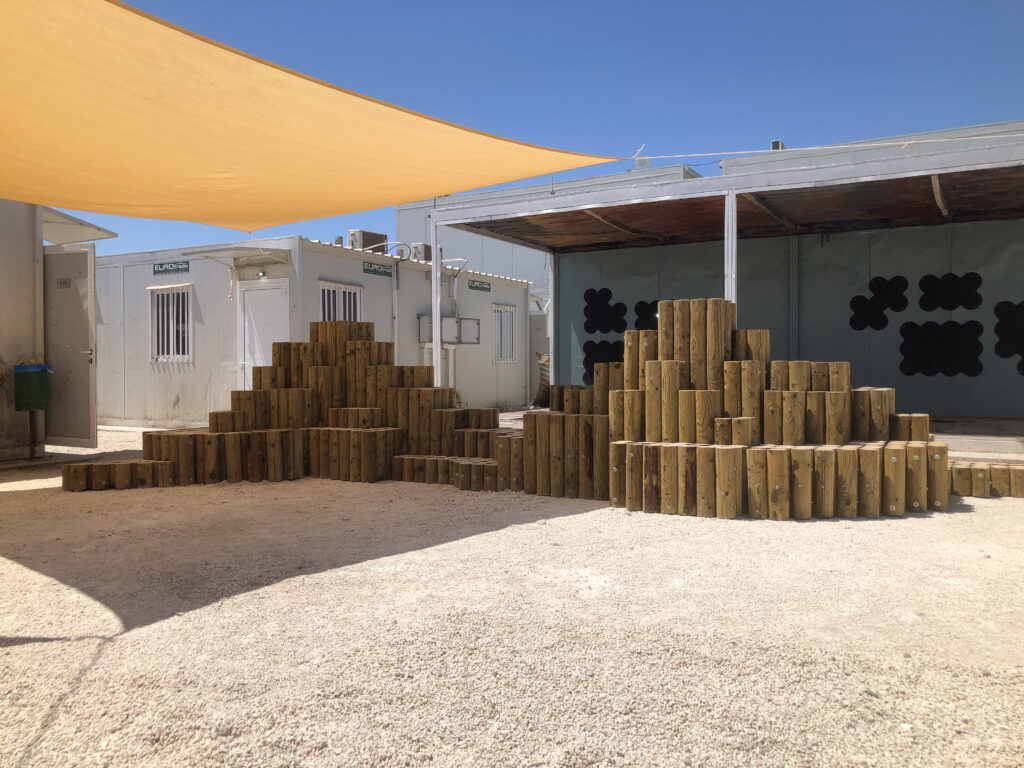
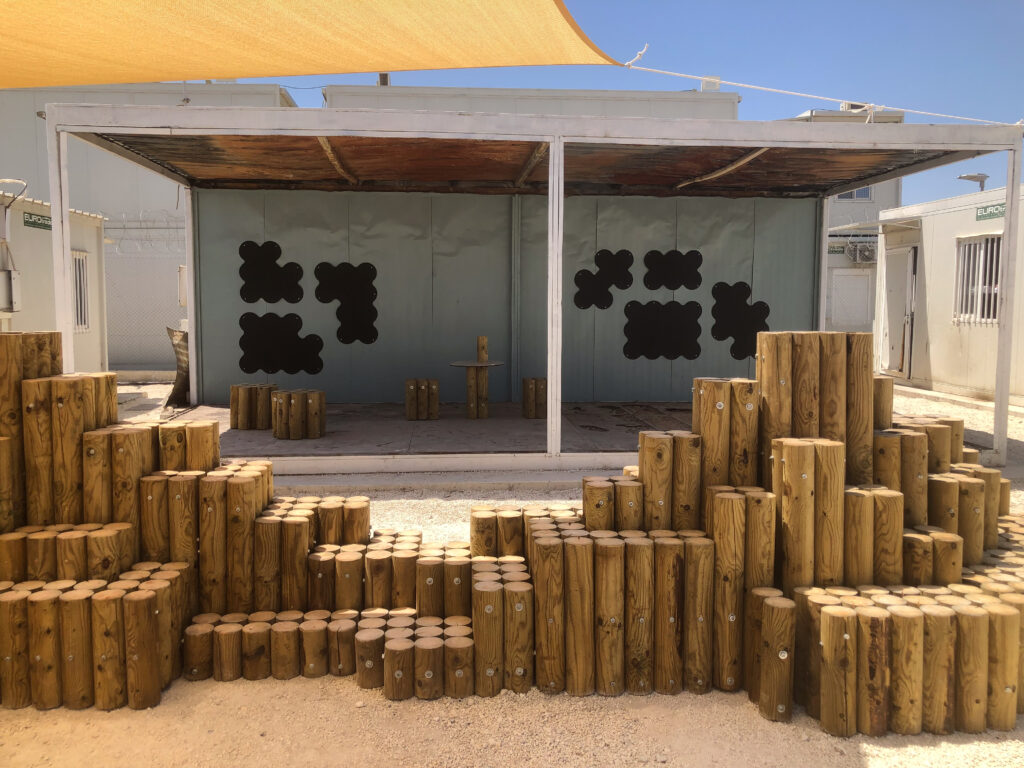
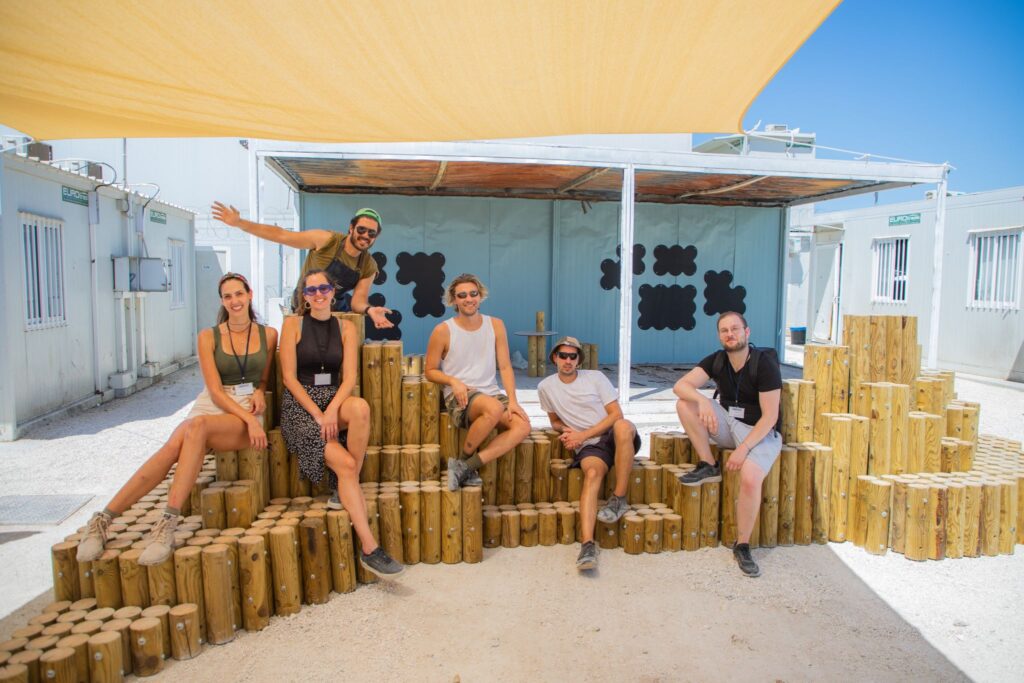
team
Resident Artists: Camila Calegari Marques, Mateus Sartori, Sasha Tihkov and Dali Chebil
Thinker Maker Space: Marios Constantinides, Stella Taousiani, Stratis Pantelides, Alex Charalambous, Maria Loizou, Kyriaki Yiakoupi, Styliana Manthopoulou, Giorgos Dimoglou